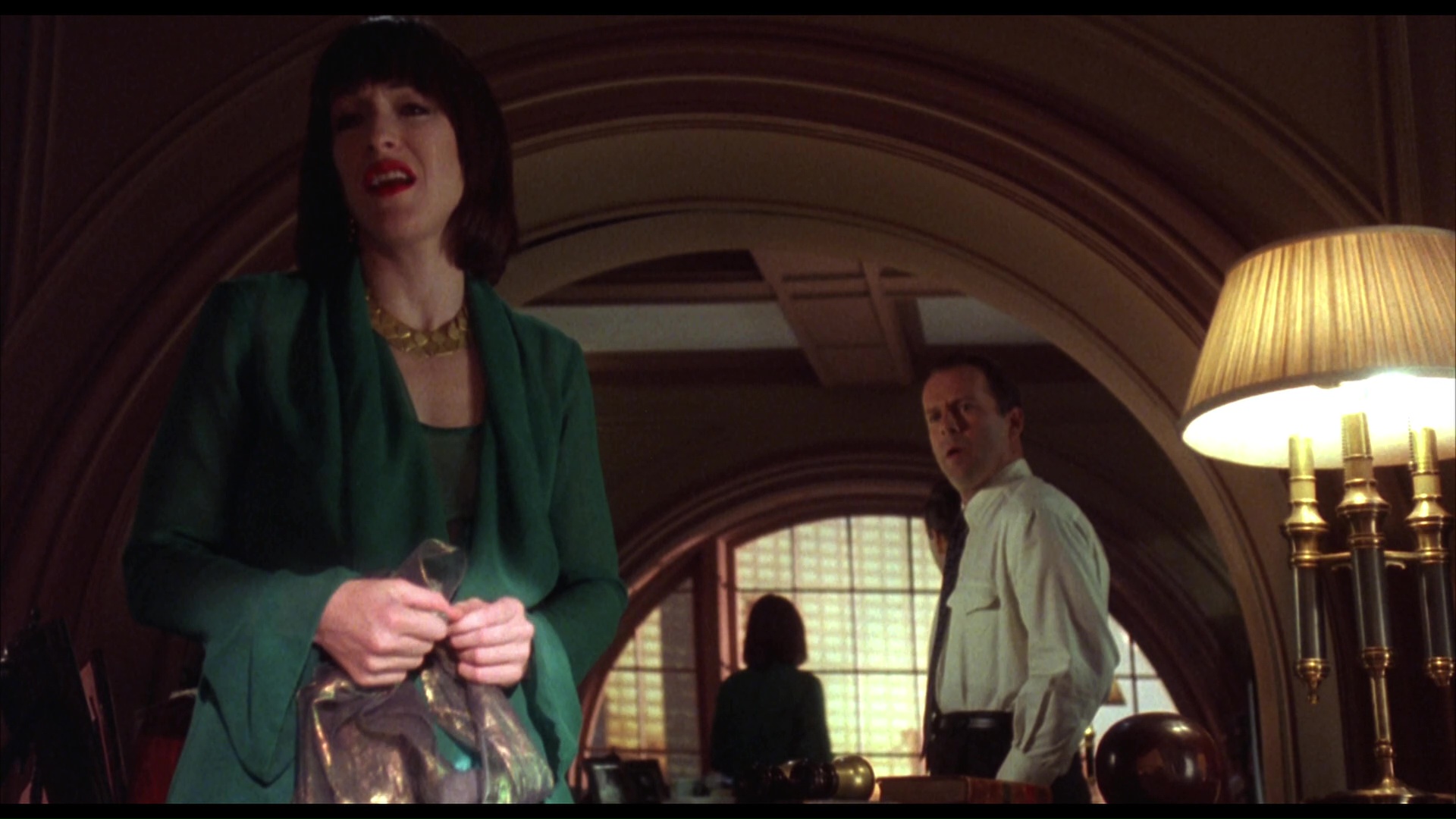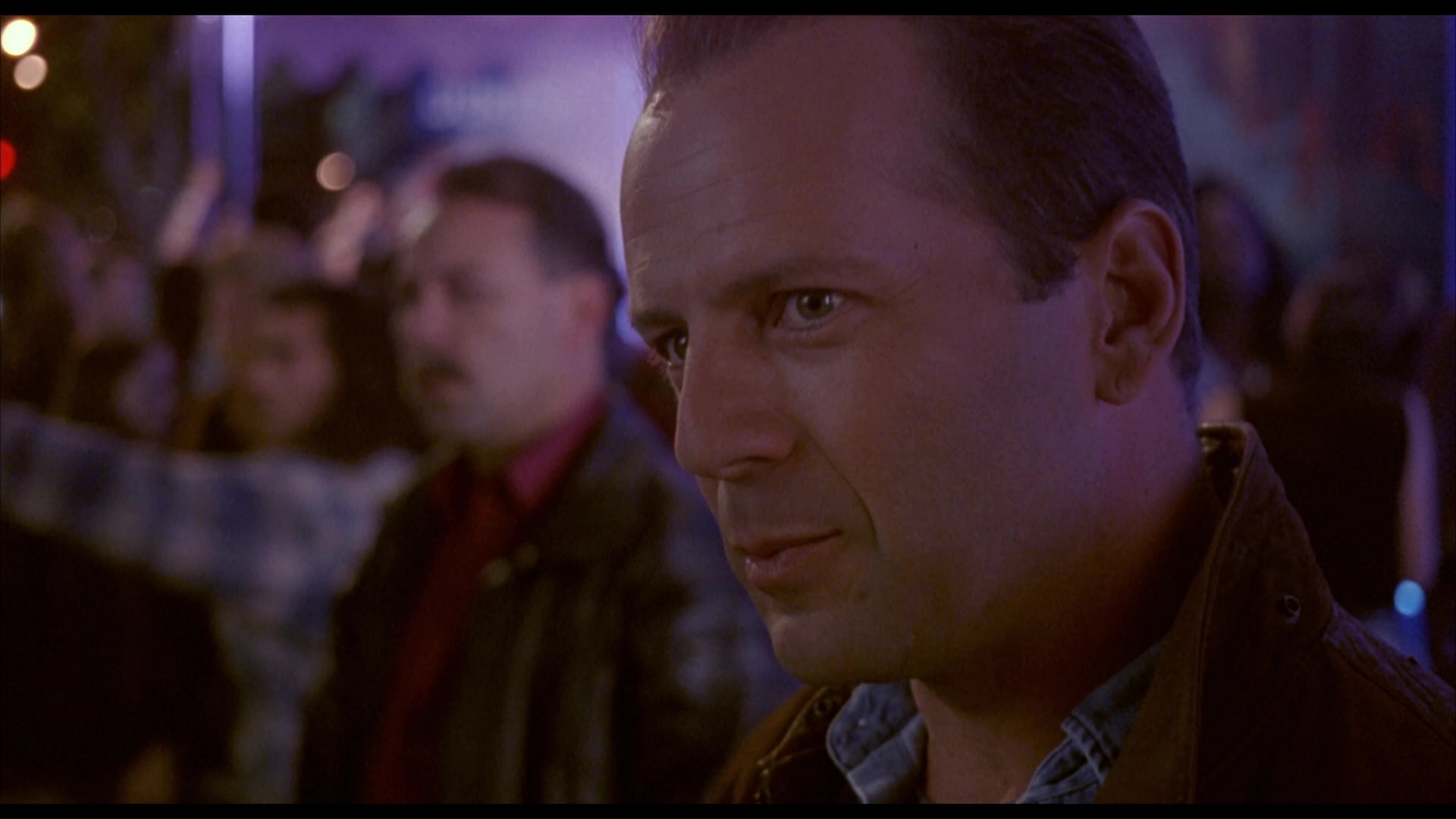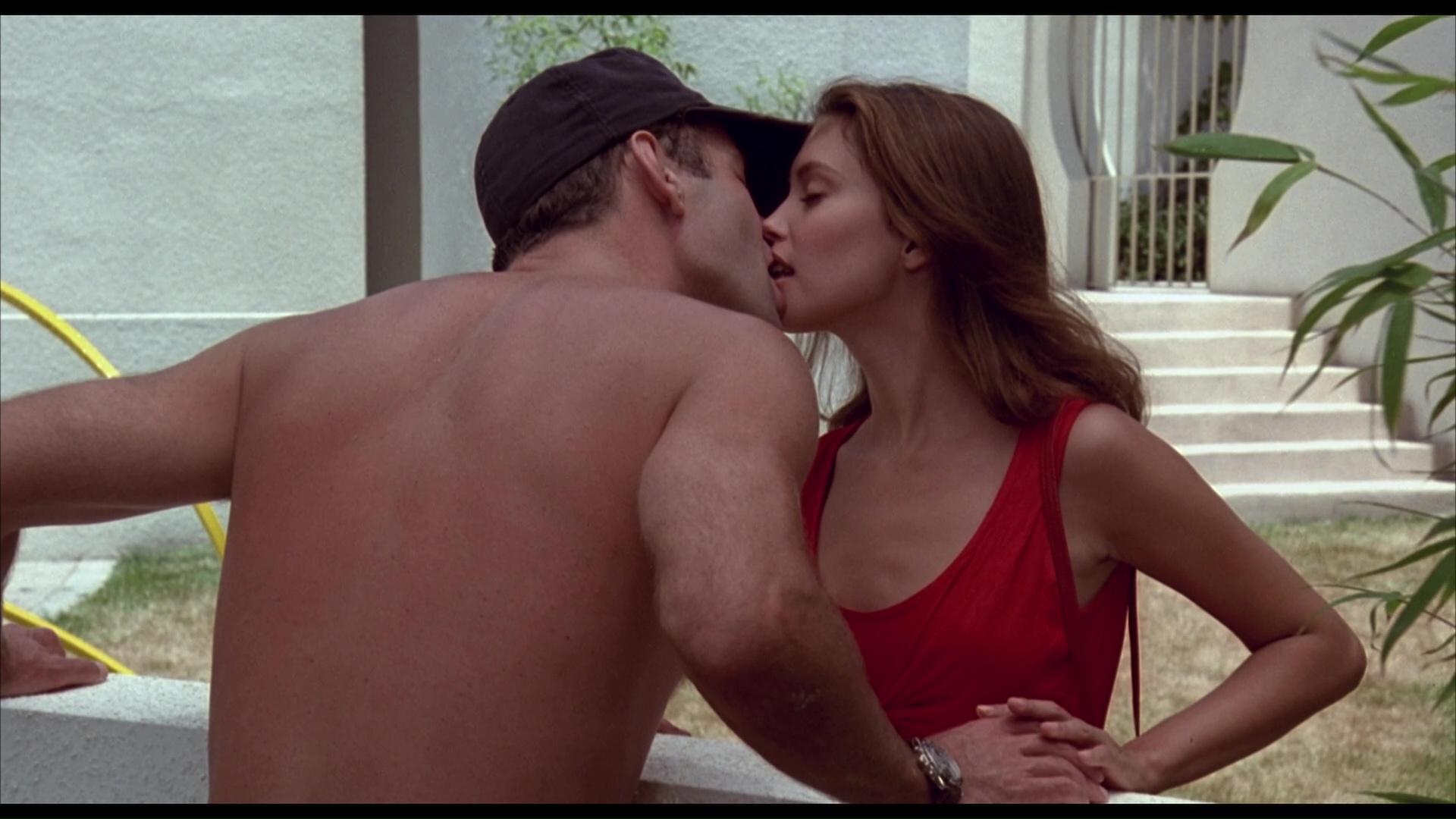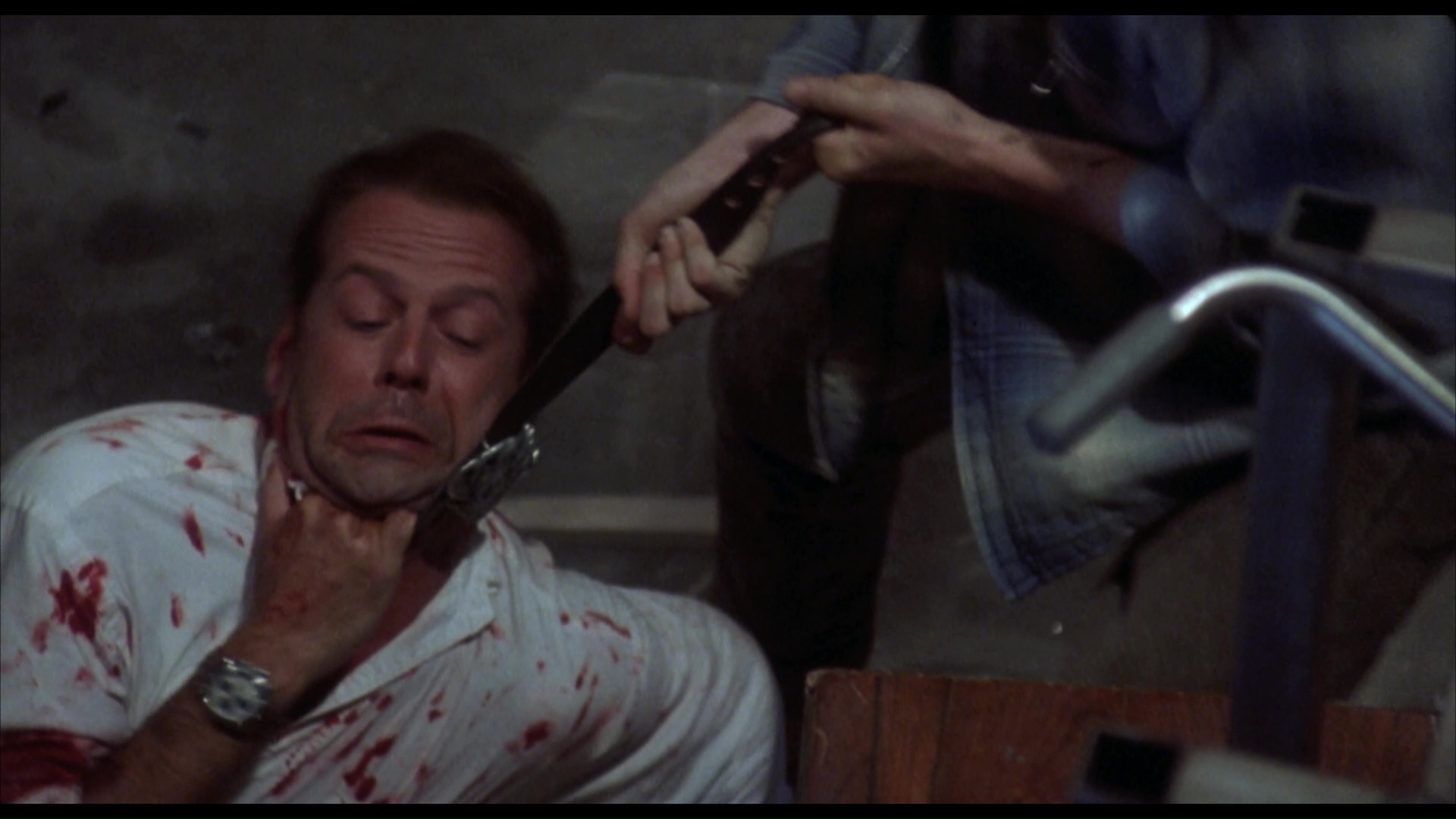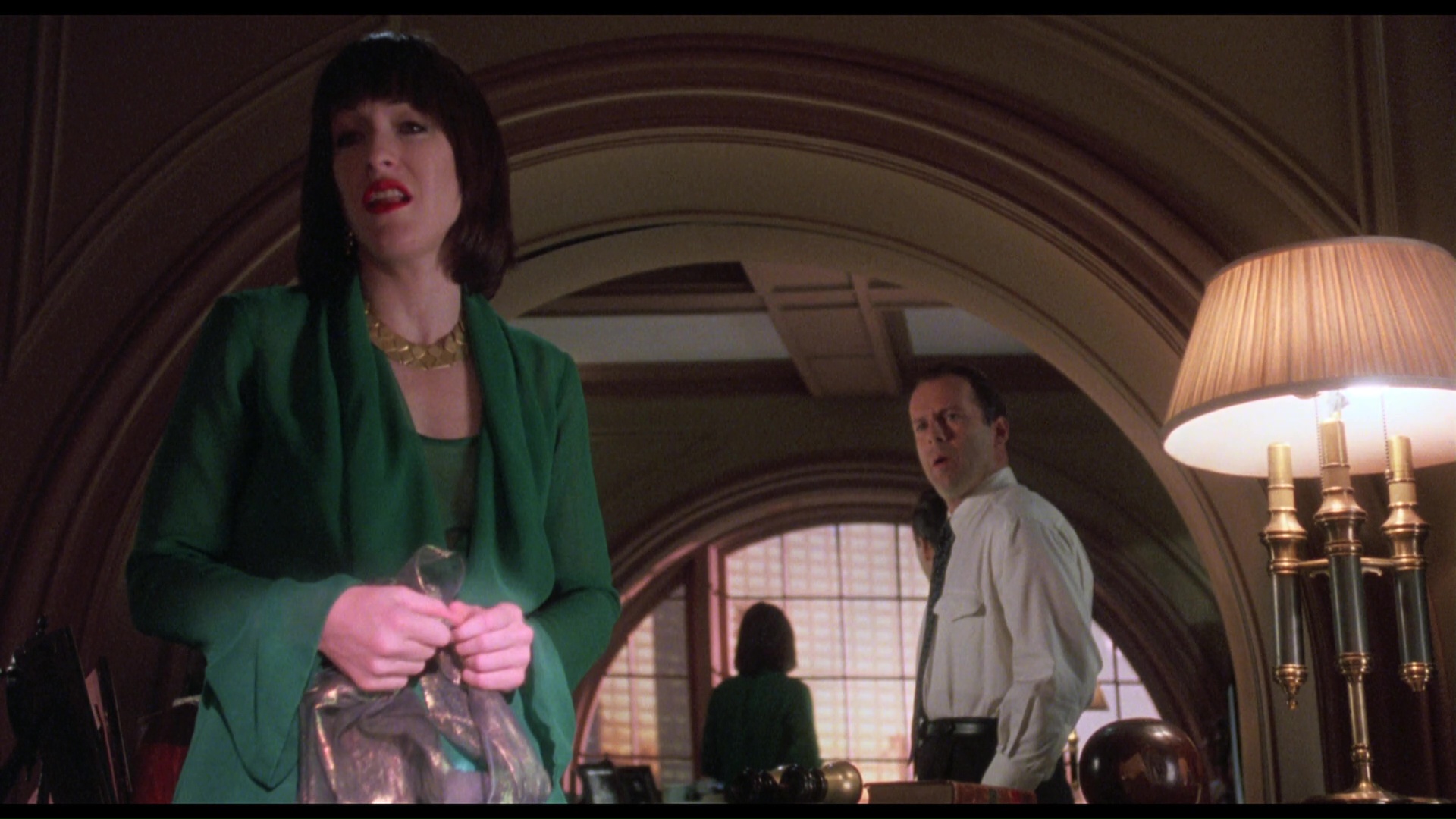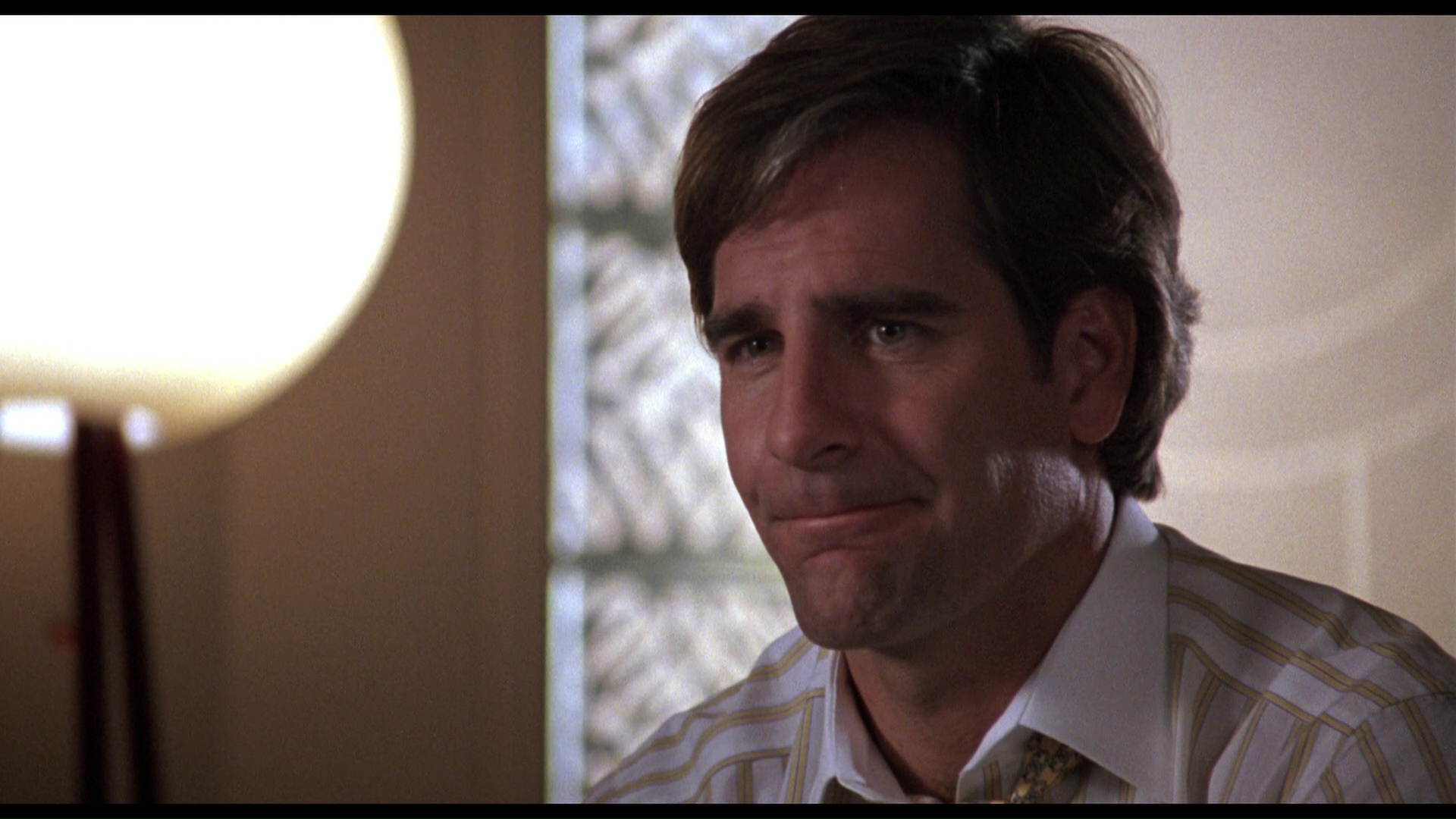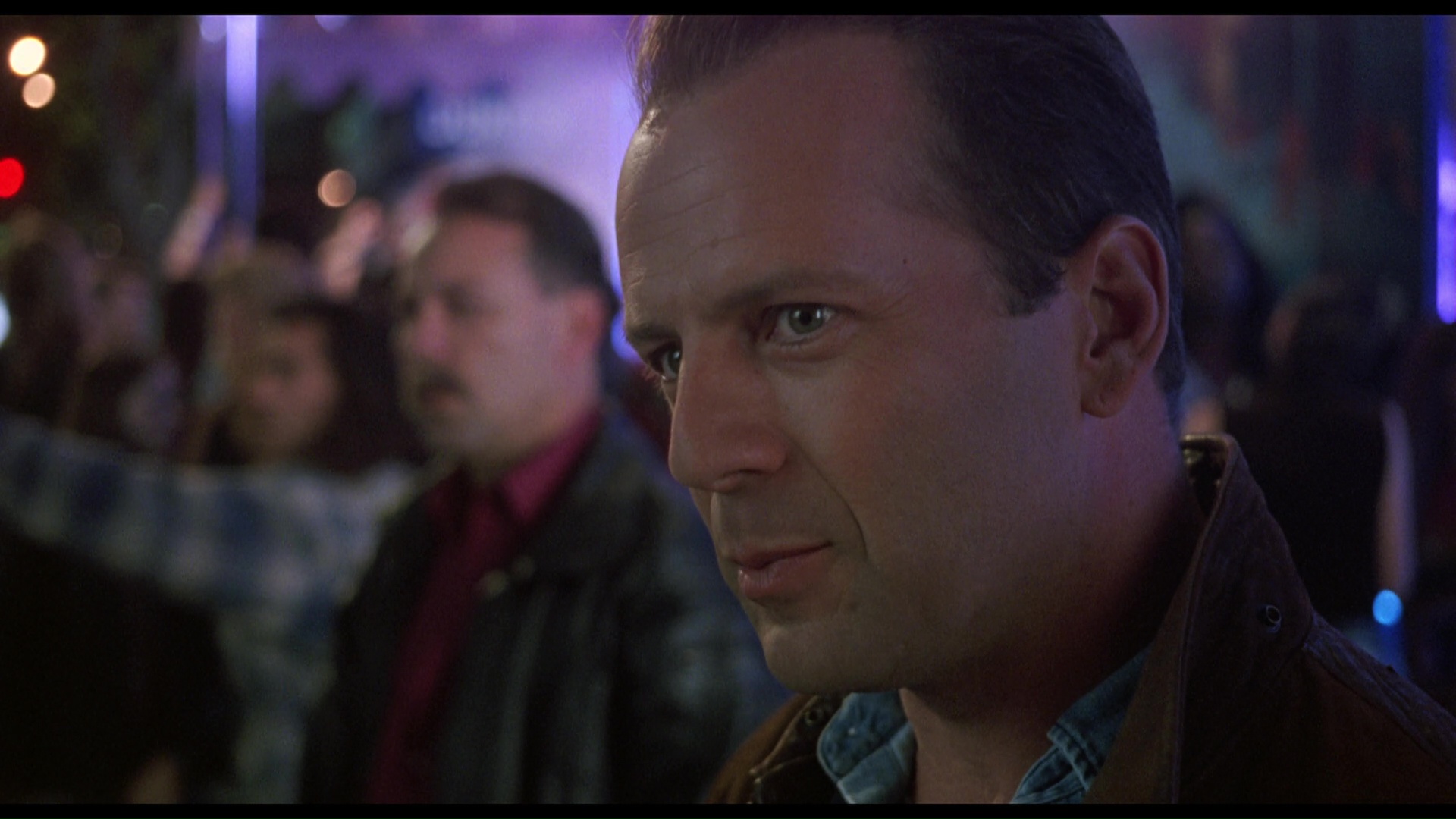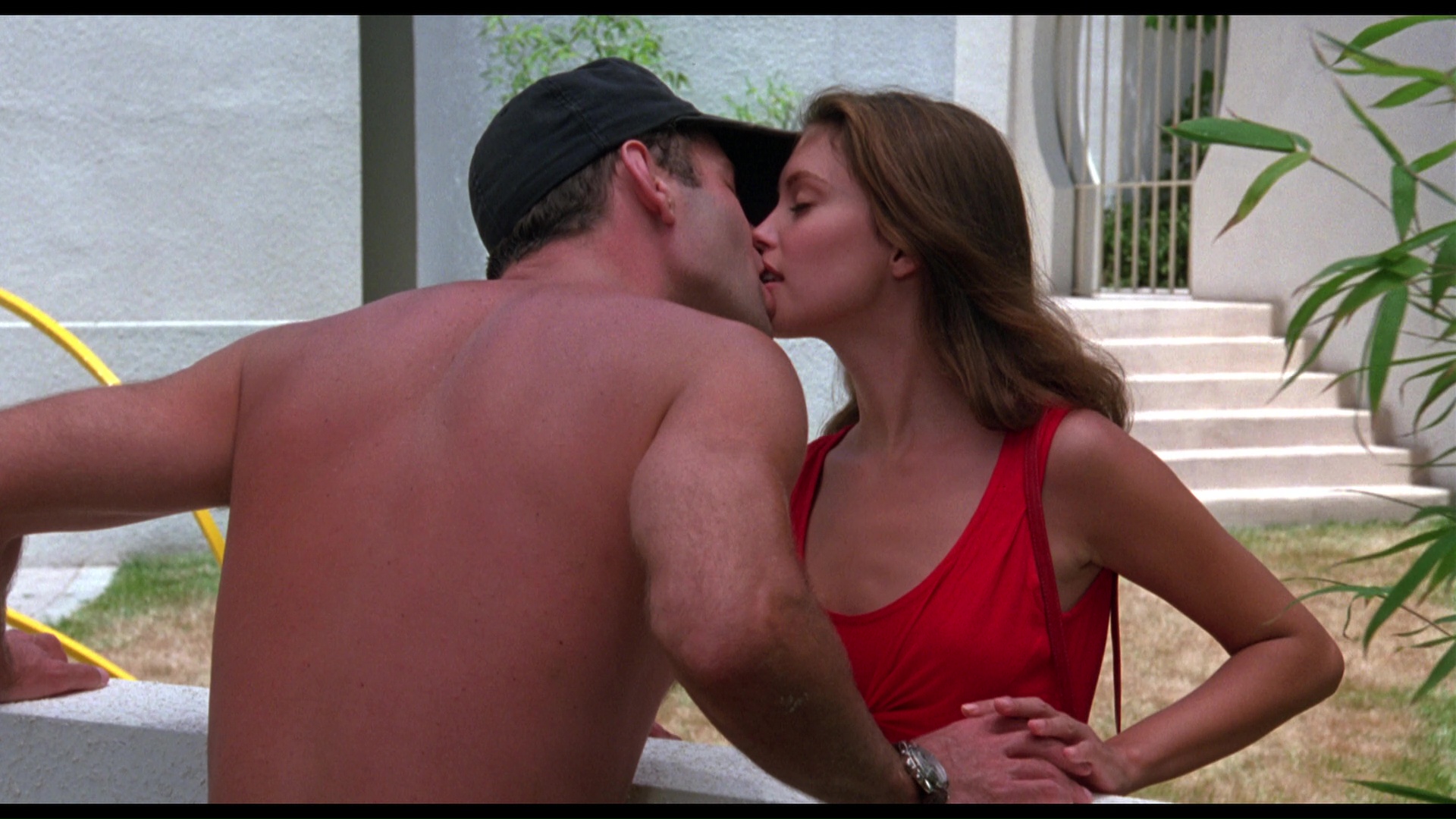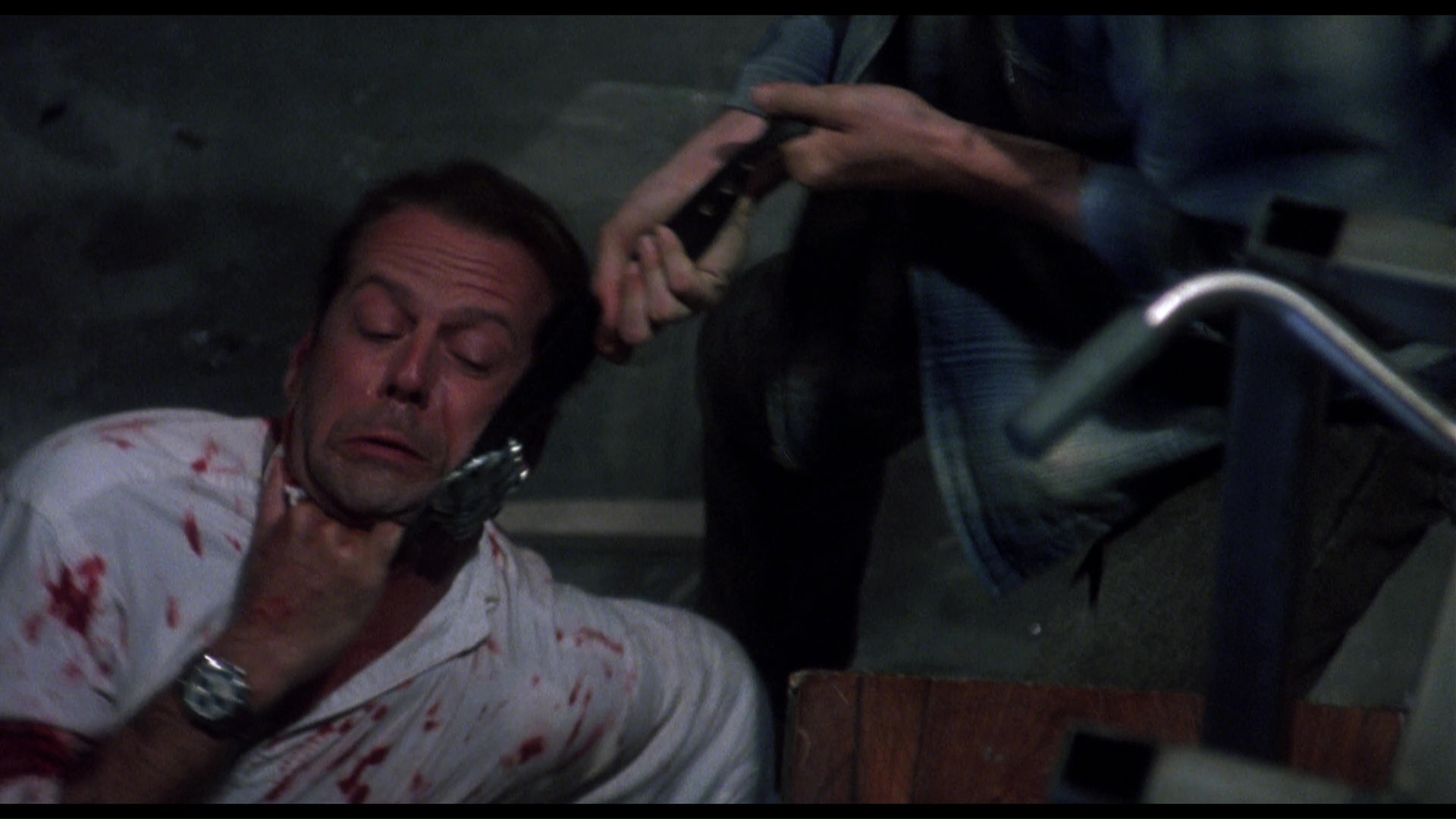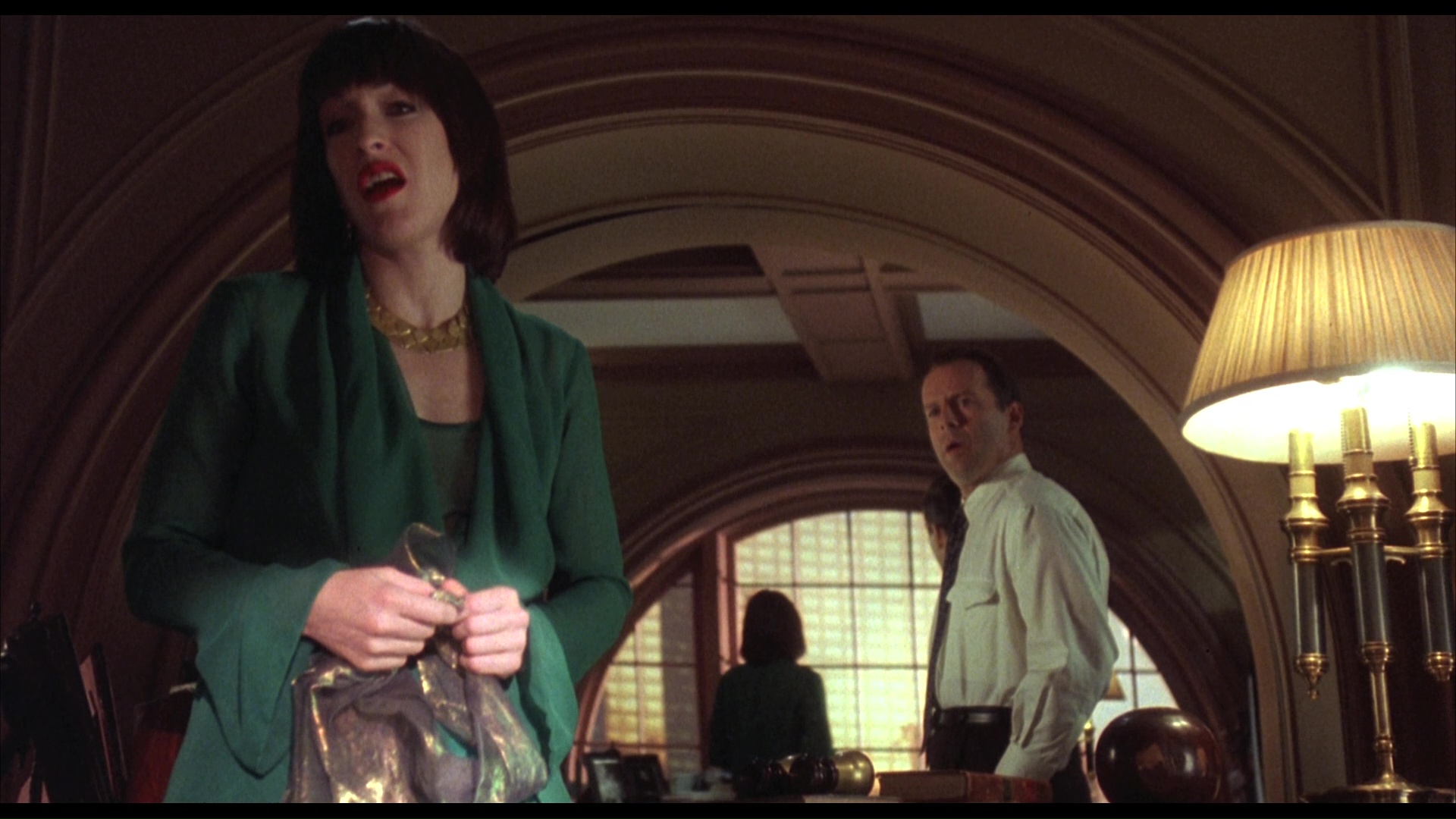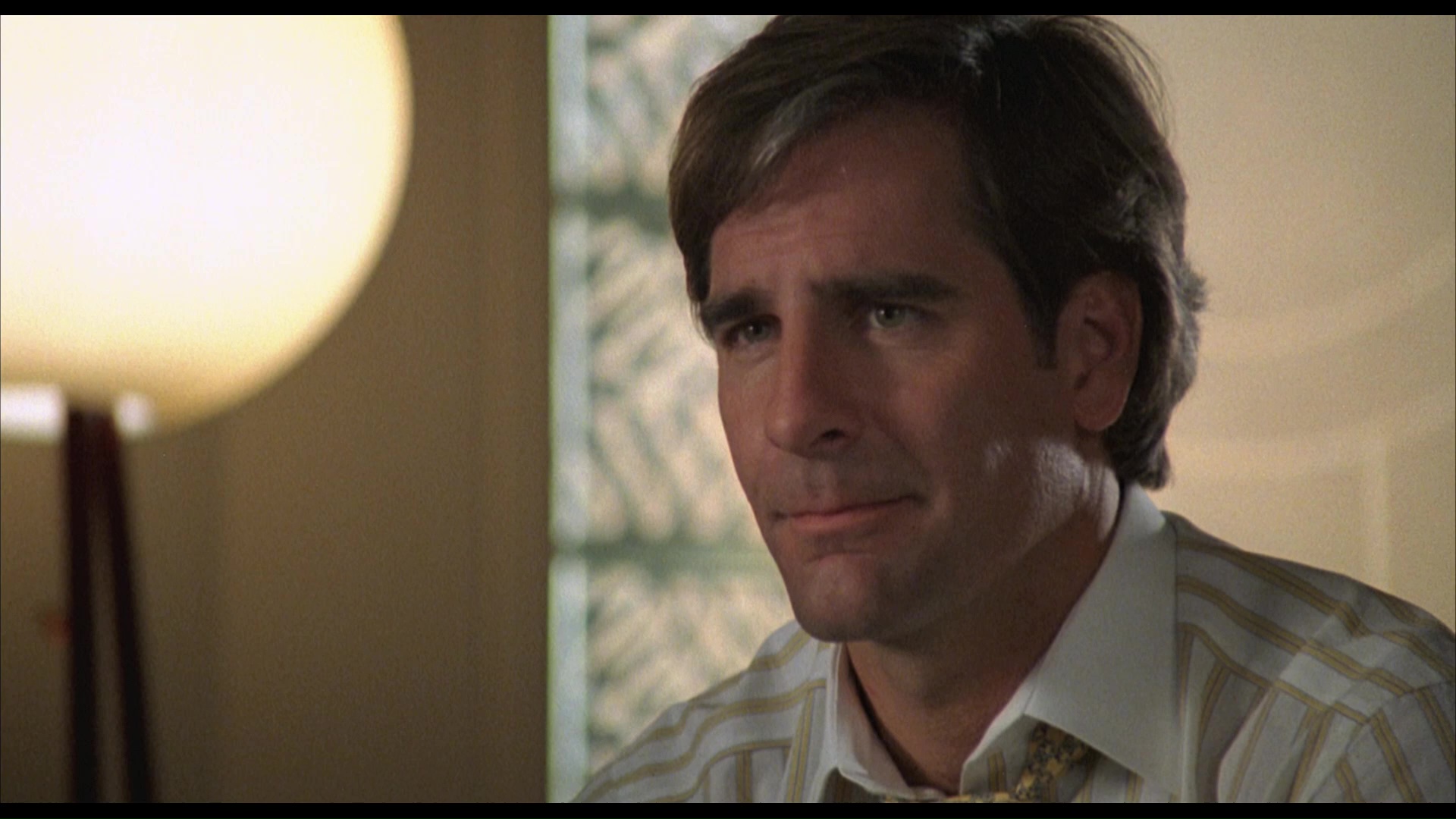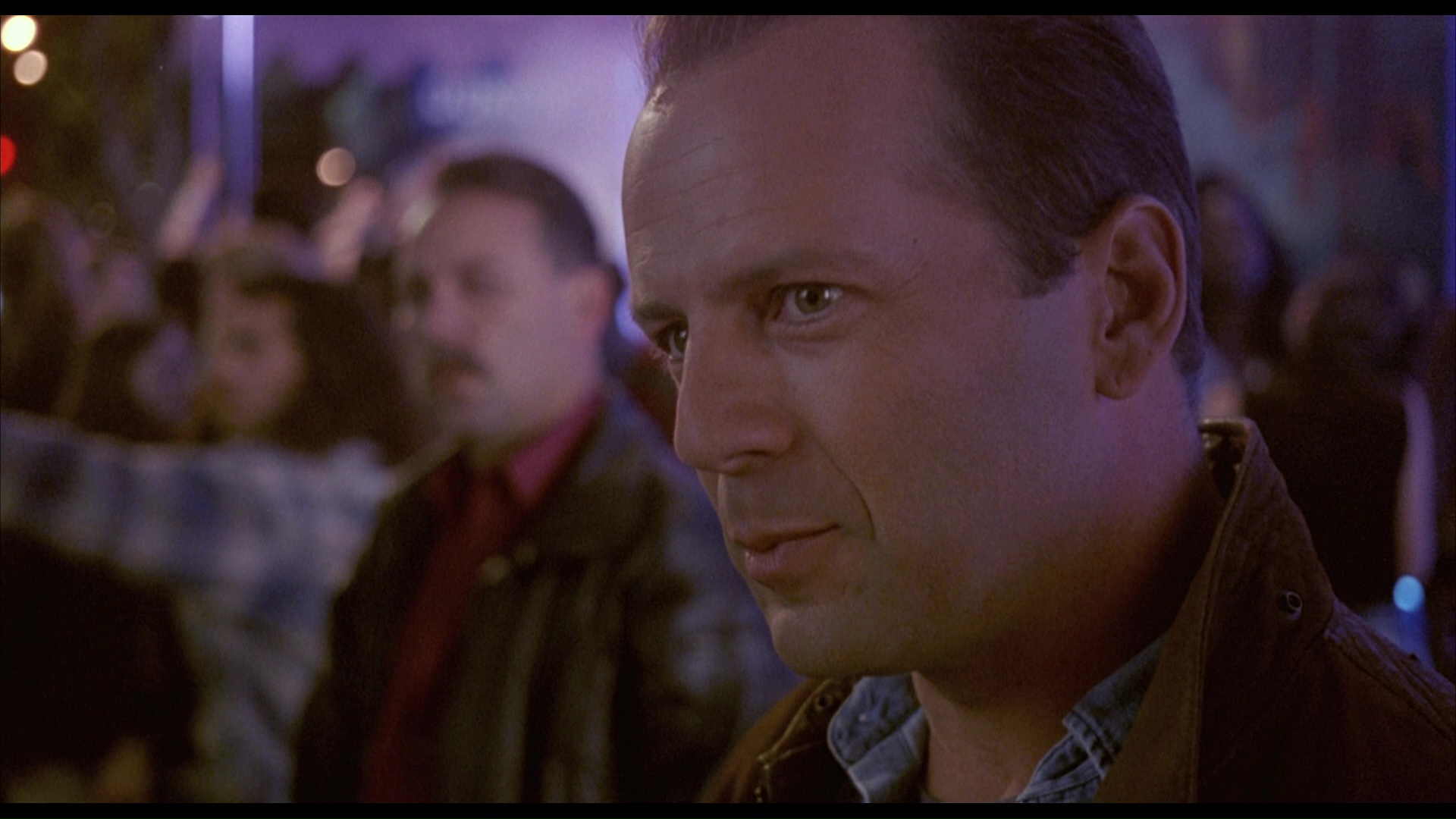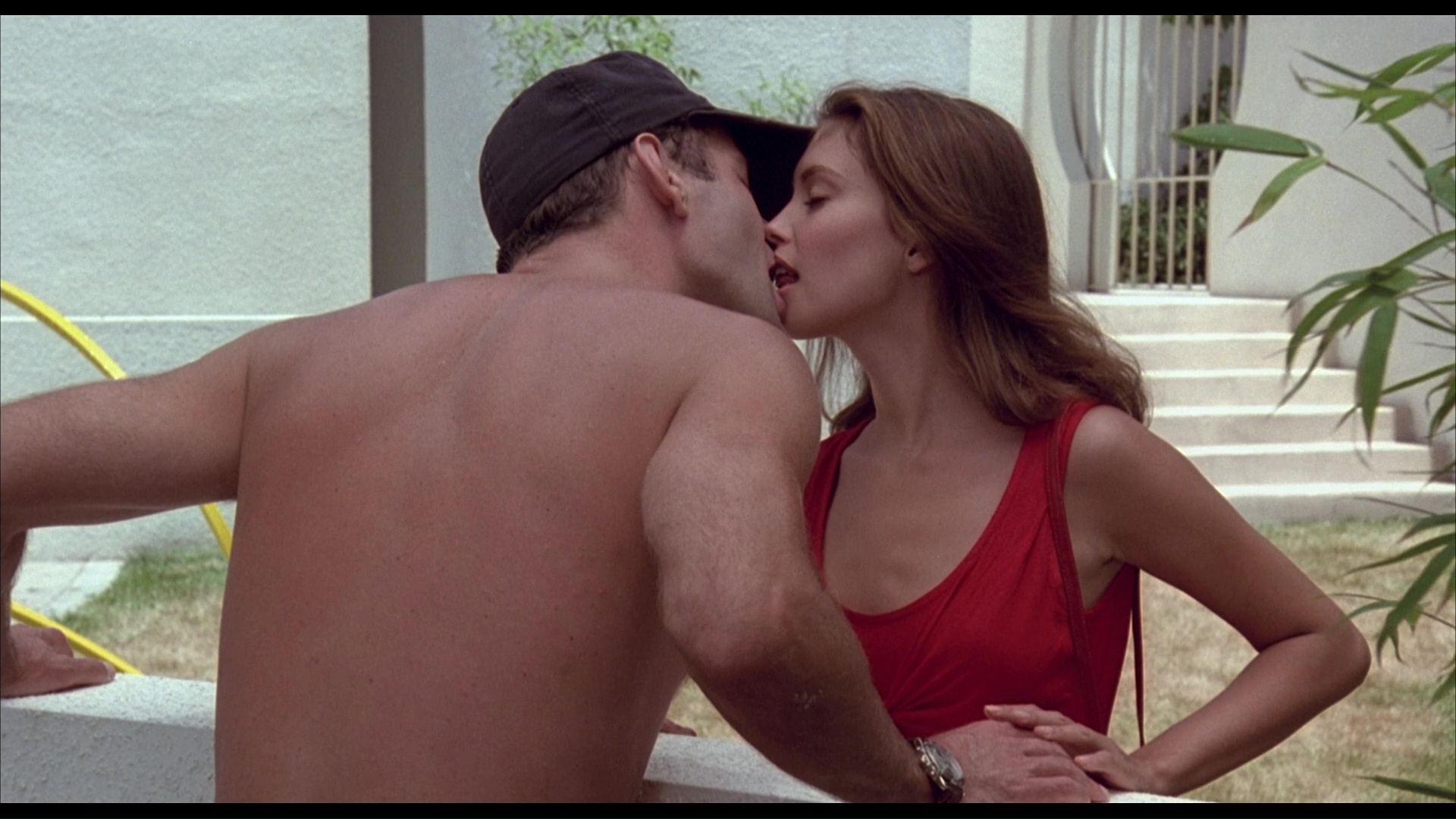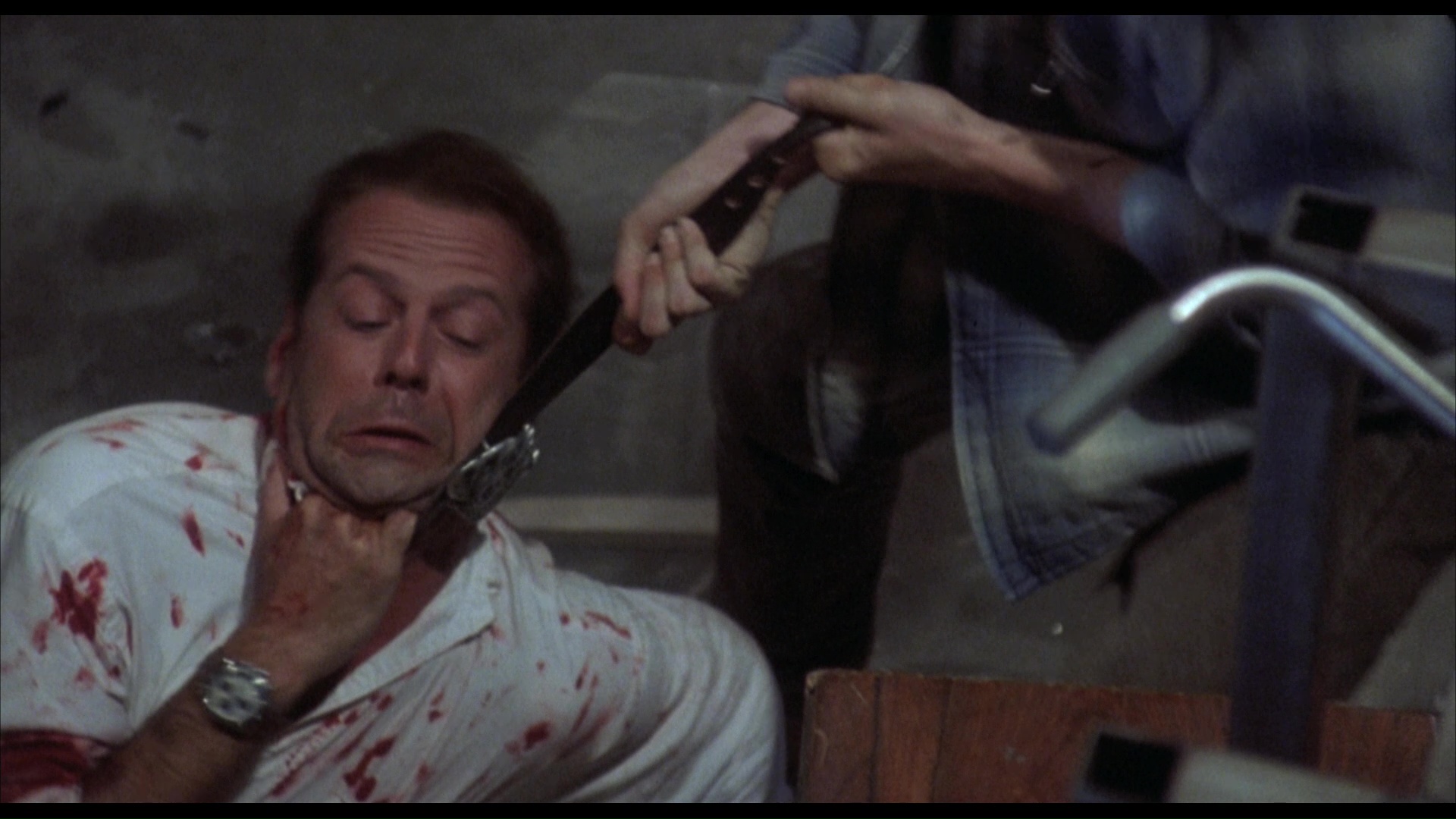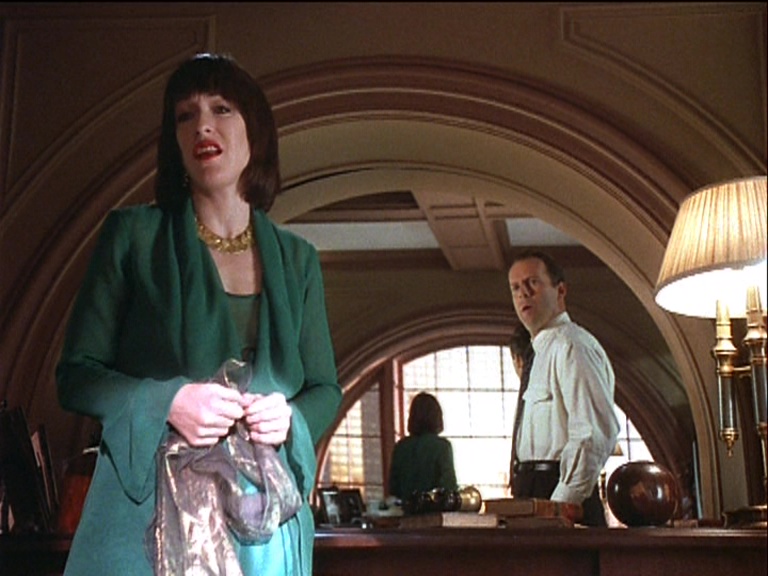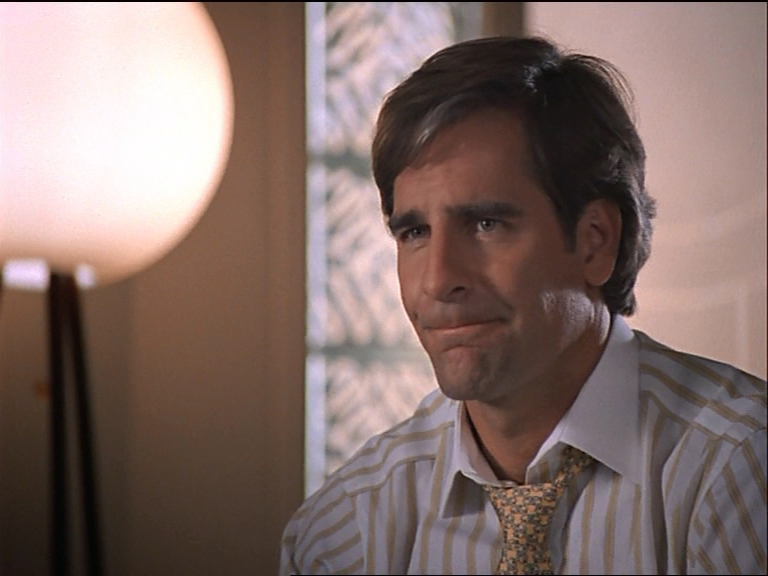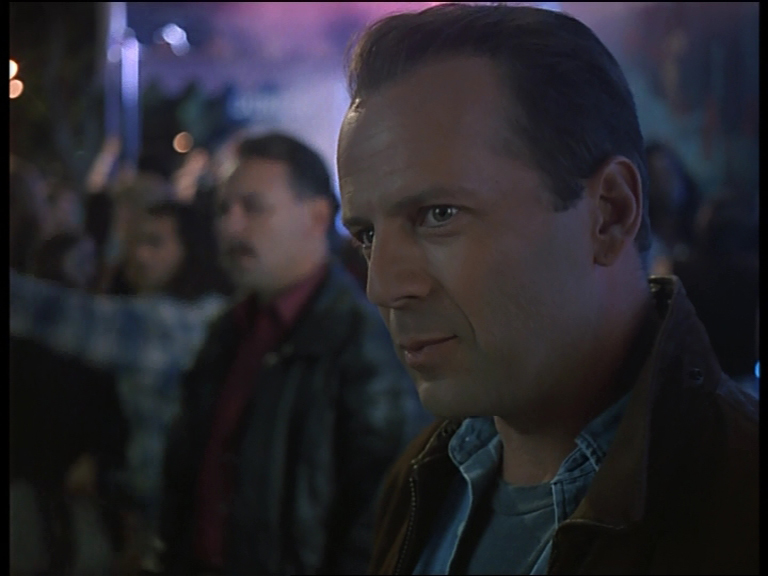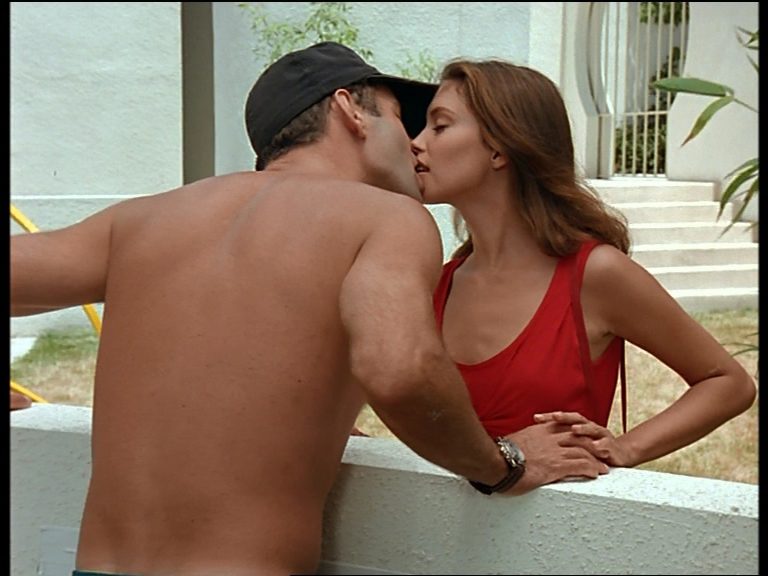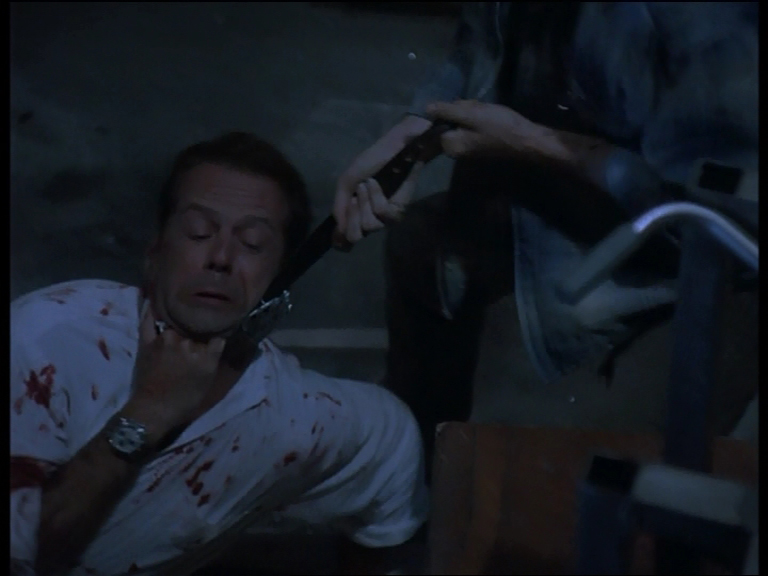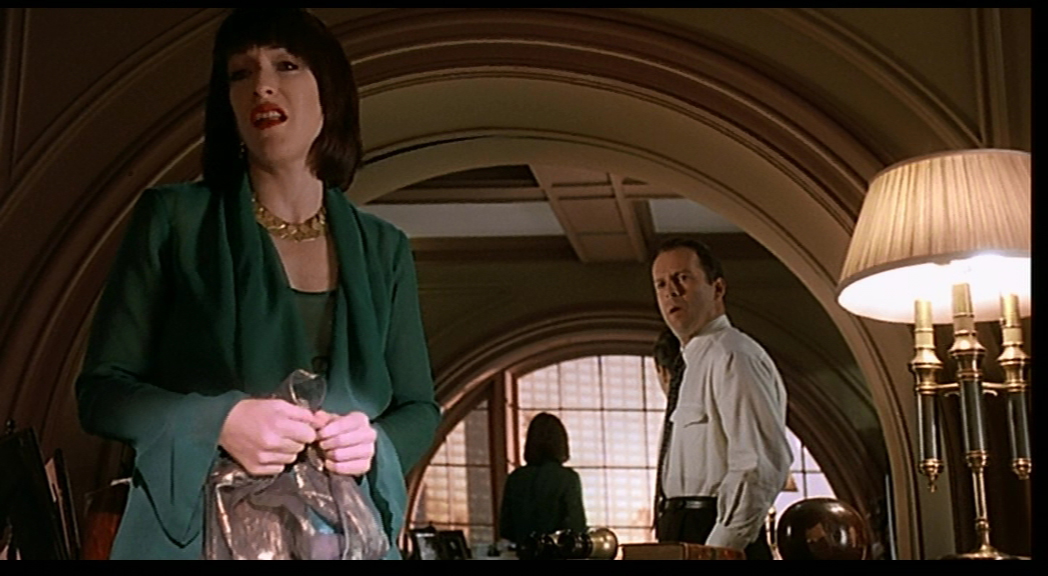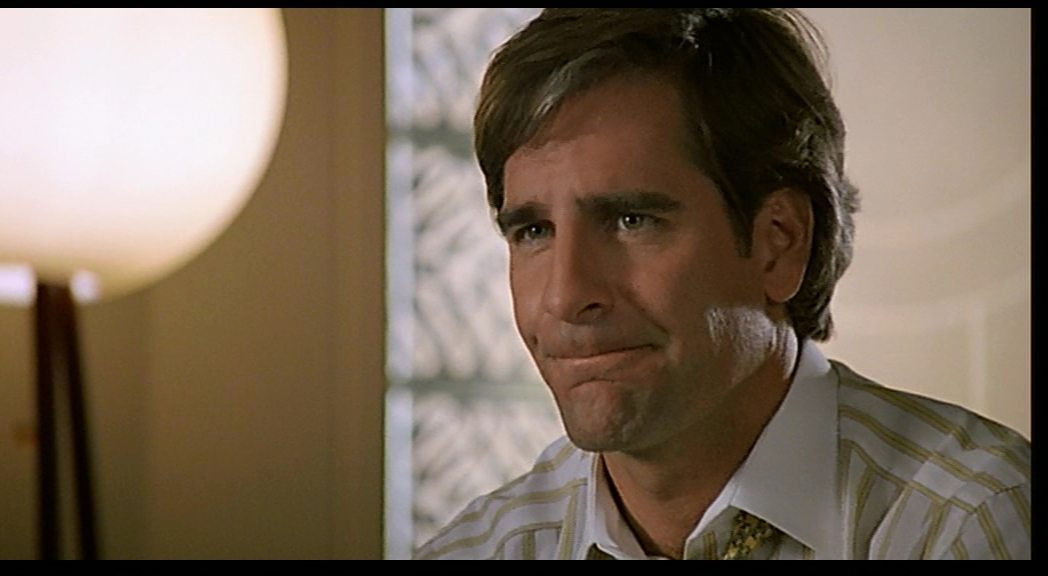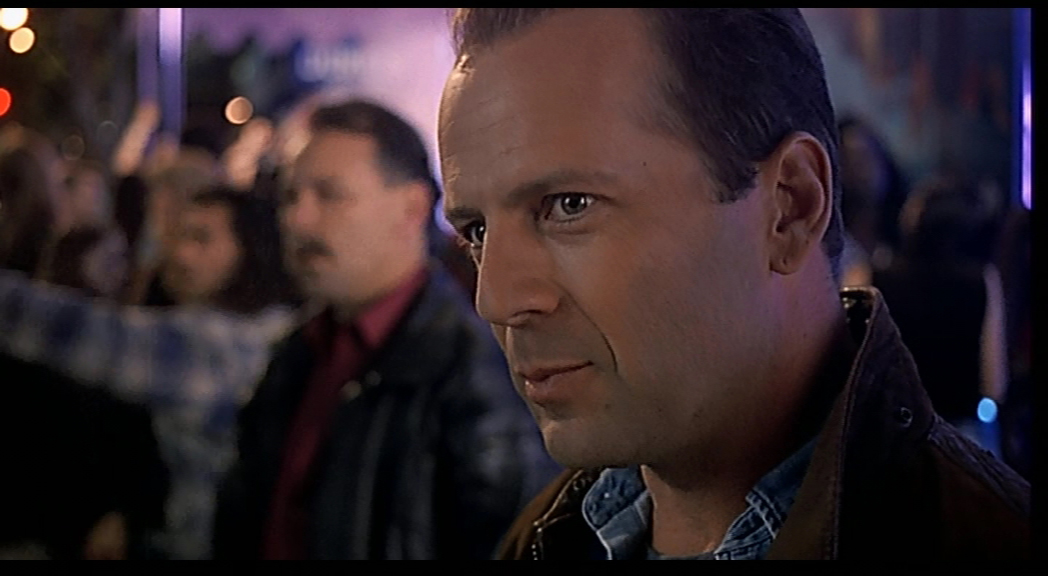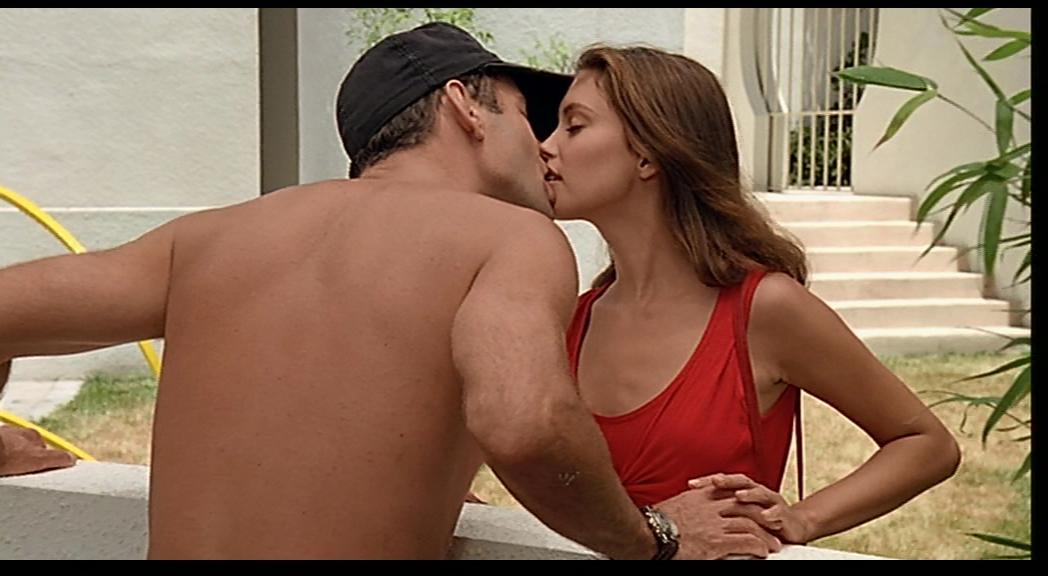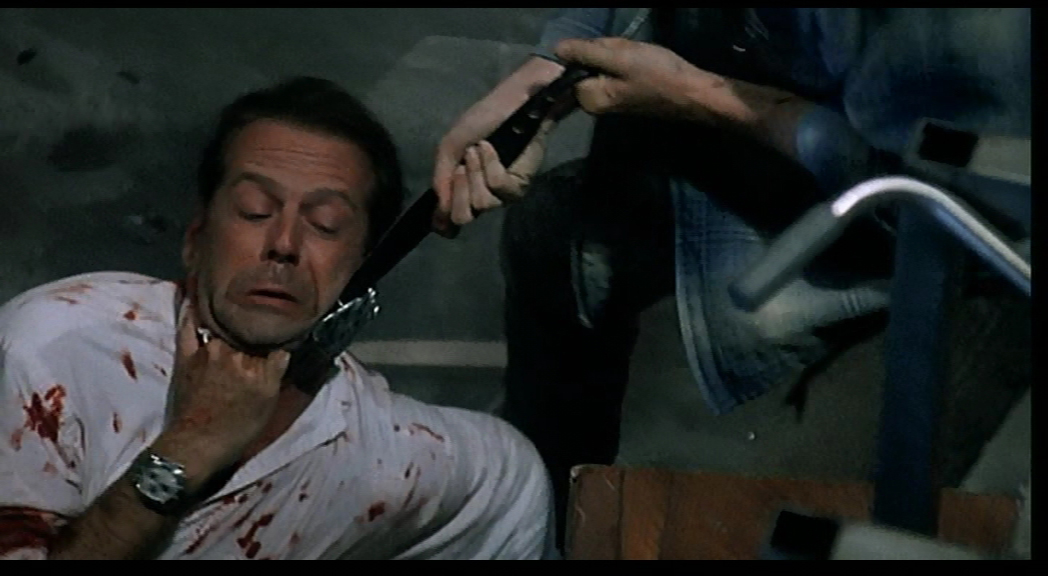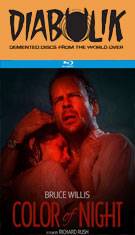
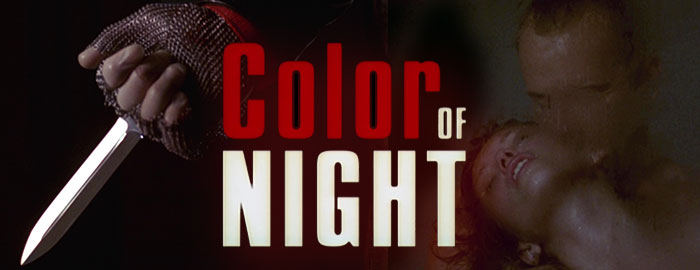
Color, 1994, 139 mins. 30 secs. / 122 mins. 55 secs.
Directed by Richard Rush
Starring Bruce Willis, Jane March, Rubén Blades, Lesley Ann Warren, Scott Bakula, Lance Henriksen, Brad Dourif, Kevin J. O'Connor, Andrew Lowery, Eriq La Salle, Jeff Corey, Kathleen Wilhoite, Shirley Knight
Kino Lorber (Blu-ray) (US RA HD), Mill Creek (Blu-ray) (US RA HD), Studio Canal (DVD) (France R2 PAL) / WS (1.85:1: (16:9), Buena Vista (DVD) (US R1 NTSC) / WS (1.85:1), Pathe (DVD) (UK R2 PAL)
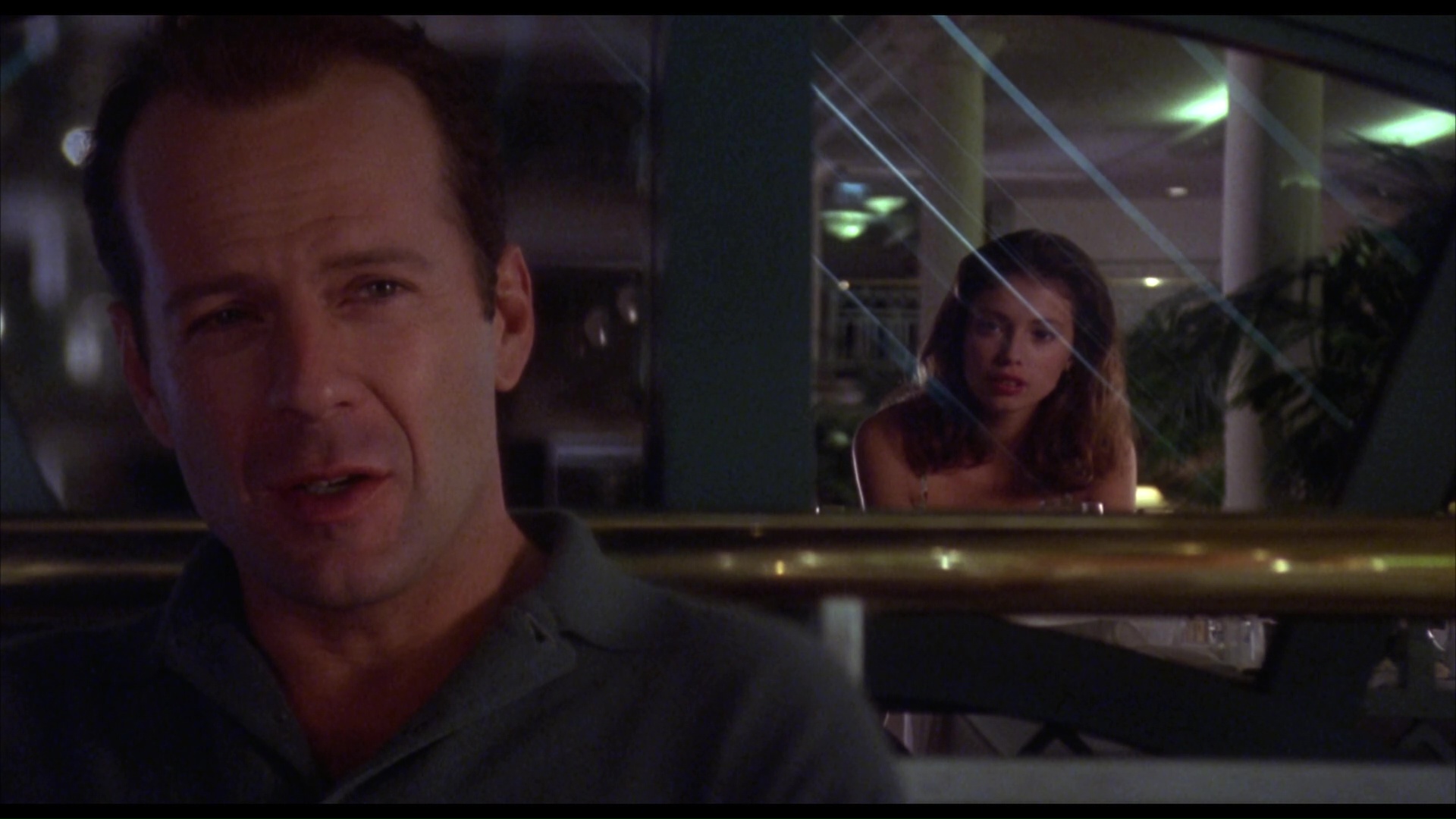 erotic thriller craze in the '90s managed
erotic thriller craze in the '90s managed 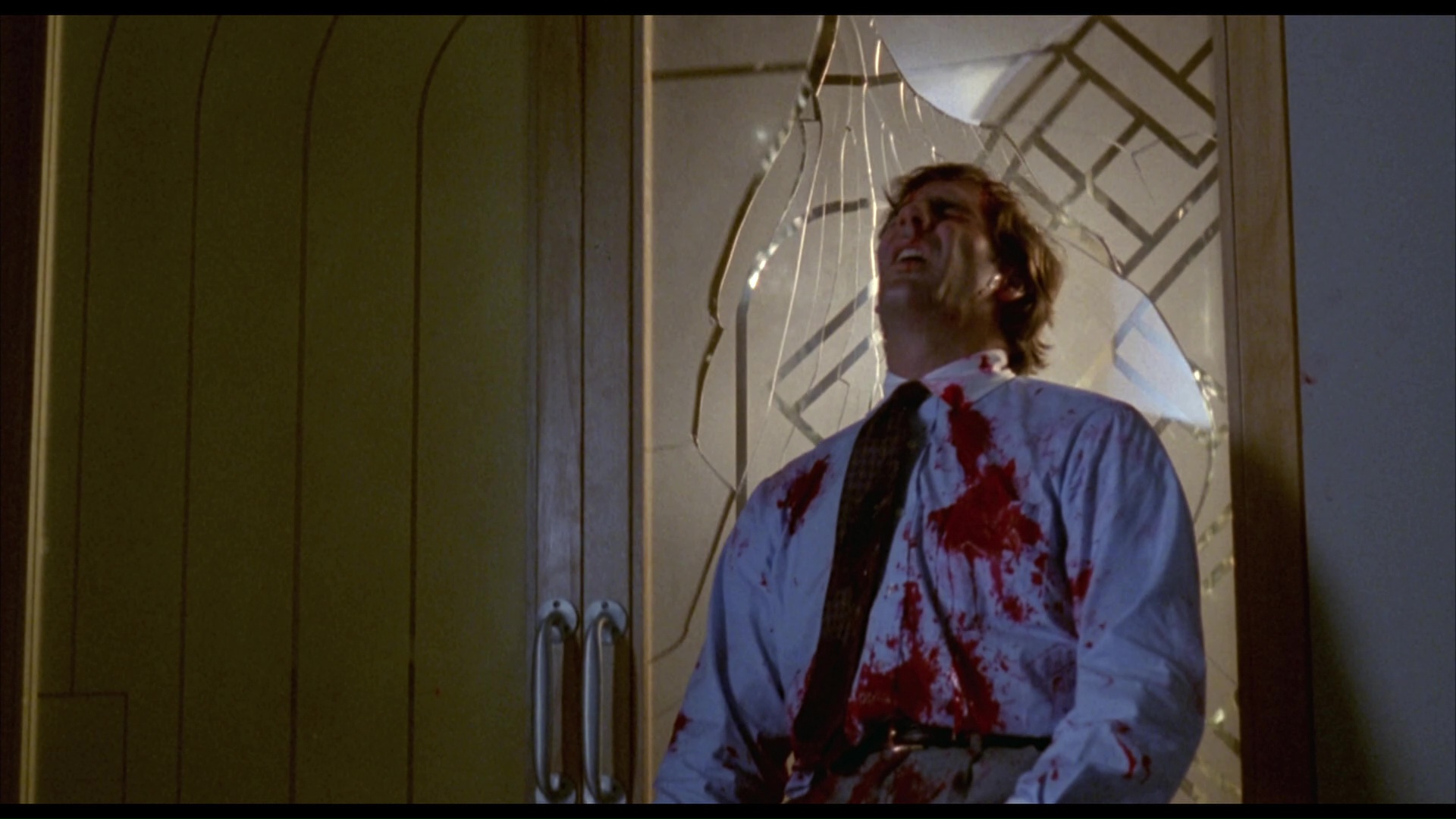 to hit some wild heights at the opposite ends of the decade with 1992's Basic Instinct and 1998's Wild Things, but for sheer maniacal entertainment value and "I can't believe a major studio released this!" value, it's tough to beat Color of Night. Cult director Richard Rush hadn't made a film for fourteen years after his acclaimed The Stunt Man (largely due to a disastrous experience trying to make Air America), and this was supposed to be his big comeback under the aegis of producer Andrew Vajna and Disney's Hollywood Pictures. Instead the film wound up making entertainment news for weeks due to its high-profile scuffles with the MPAA, who insisted on trims to the sex scenes including much-publicized exposure of Bruce Willis, and Vajna who insisted on releasing his own streamlined, two-hour cut of the film with twenty minutes of cuts. By the time the R-rated feature opened in late summer of 1994, the critics had their knives out and audiences, turned off by the reports of censorship, didn't turn out as heavily as expected. However, the film's history was far from over at that point... but more on that in a moment.
to hit some wild heights at the opposite ends of the decade with 1992's Basic Instinct and 1998's Wild Things, but for sheer maniacal entertainment value and "I can't believe a major studio released this!" value, it's tough to beat Color of Night. Cult director Richard Rush hadn't made a film for fourteen years after his acclaimed The Stunt Man (largely due to a disastrous experience trying to make Air America), and this was supposed to be his big comeback under the aegis of producer Andrew Vajna and Disney's Hollywood Pictures. Instead the film wound up making entertainment news for weeks due to its high-profile scuffles with the MPAA, who insisted on trims to the sex scenes including much-publicized exposure of Bruce Willis, and Vajna who insisted on releasing his own streamlined, two-hour cut of the film with twenty minutes of cuts. By the time the R-rated feature opened in late summer of 1994, the critics had their knives out and audiences, turned off by the reports of censorship, didn't turn out as heavily as expected. However, the film's history was far from over at that point... but more on that in a moment. 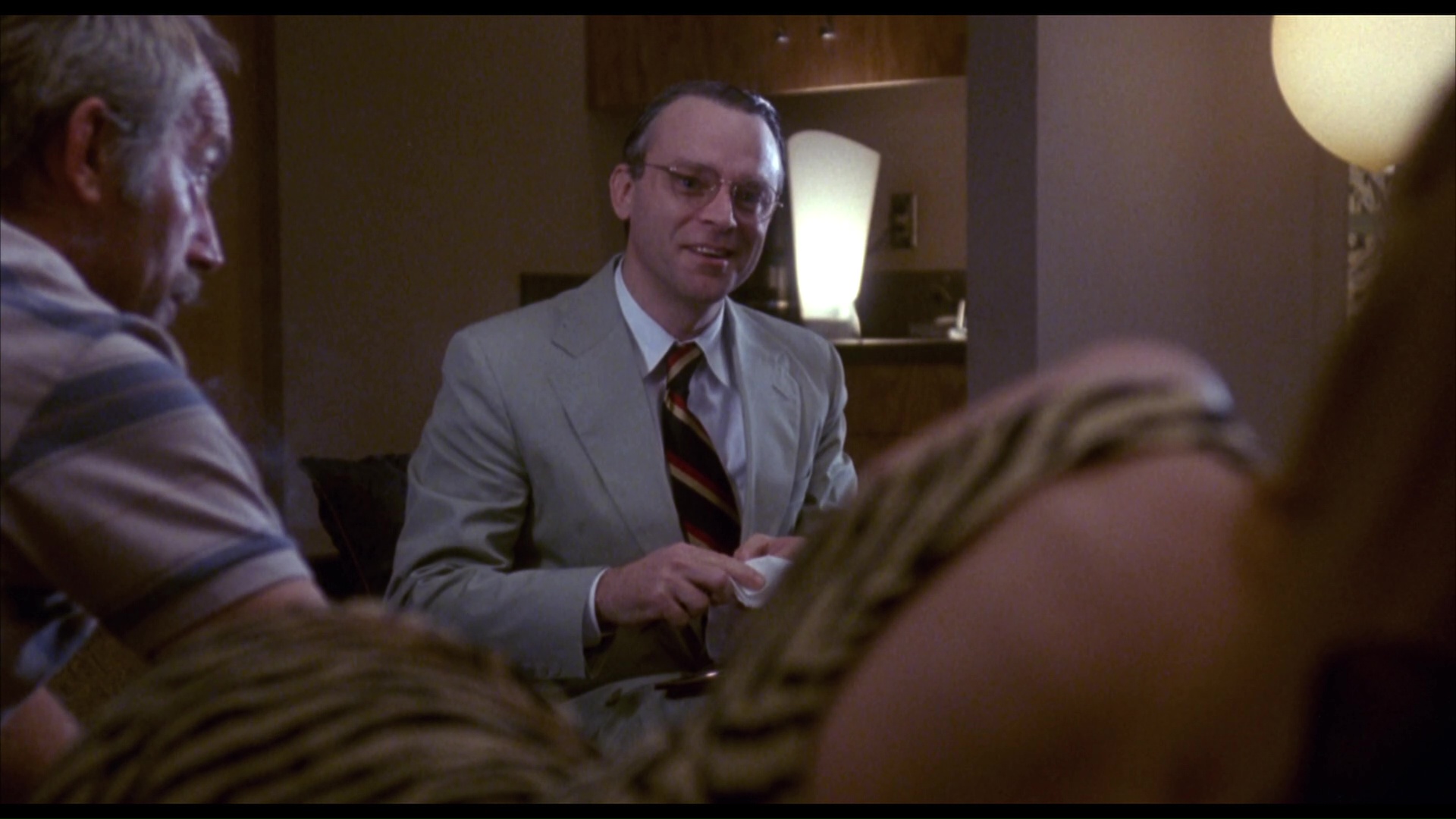 boy named Richie. Bob's fears to out to be very founded one night when he's brutally stabbed to death in his office, and investigating police detective Martinez (Blades) is more than a little belligerent about Capa's line of work. Determined
boy named Richie. Bob's fears to out to be very founded one night when he's brutally stabbed to death in his office, and investigating police detective Martinez (Blades) is more than a little belligerent about Capa's line of work. Determined 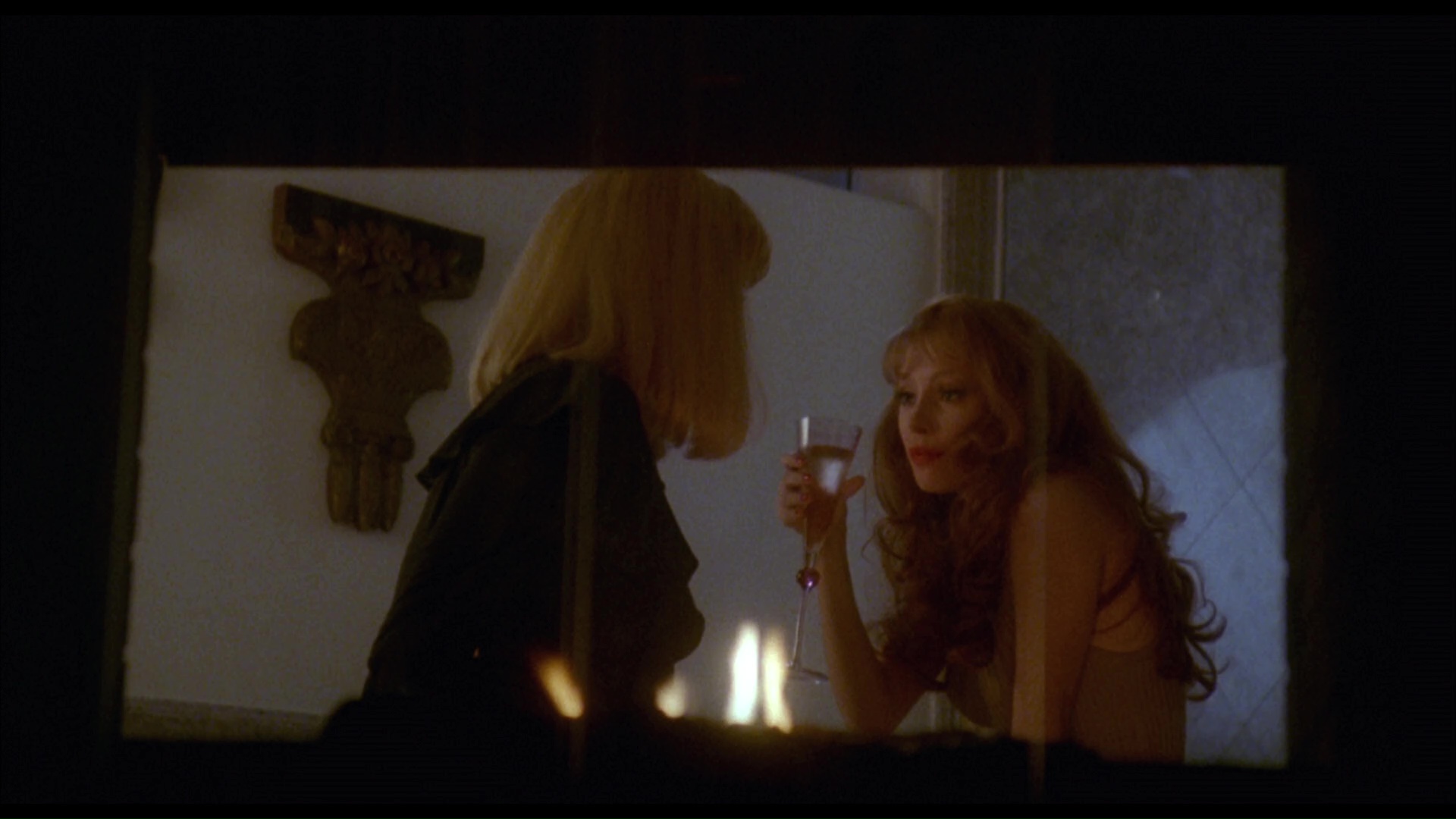 to solve the mystery of his friend's fate, Capa takes over the therapy group and begins to see a common thread in all of their love lives just as he becomes entangled with a mysterious, beautiful woman named Rose (March) whom he meets in a minor fender bender. When the killer starts making attempts on Capa's life ranging from a rattlesnake in the mailbox to tossing a car at him off of a parking structure, he realizes he had better move fast before he ends up next on the list of victims.
to solve the mystery of his friend's fate, Capa takes over the therapy group and begins to see a common thread in all of their love lives just as he becomes entangled with a mysterious, beautiful woman named Rose (March) whom he meets in a minor fender bender. When the killer starts making attempts on Capa's life ranging from a rattlesnake in the mailbox to tossing a car at him off of a parking structure, he realizes he had better move fast before he ends up next on the list of victims.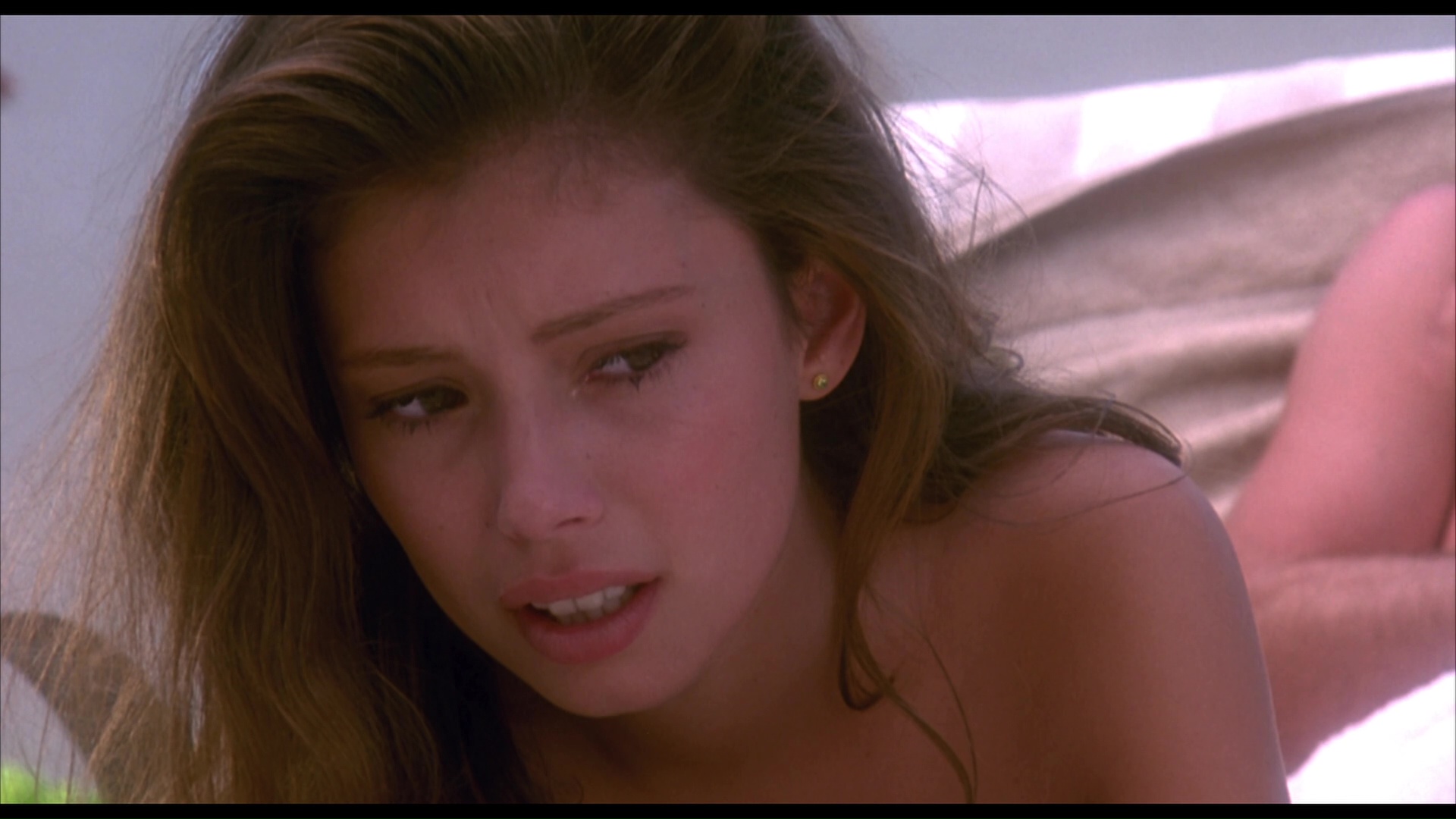 added all the way through including Wilhoite fellating a pistol at the beginning, considerable additional interplay between Blades and Willis, a greatly expanded look at Warren's same-sex relationship with shopping pal Bonnie, and a lengthy thunderstorm impromptu therapy session with Henriksen, whose character is
added all the way through including Wilhoite fellating a pistol at the beginning, considerable additional interplay between Blades and Willis, a greatly expanded look at Warren's same-sex relationship with shopping pal Bonnie, and a lengthy thunderstorm impromptu therapy session with Henriksen, whose character is 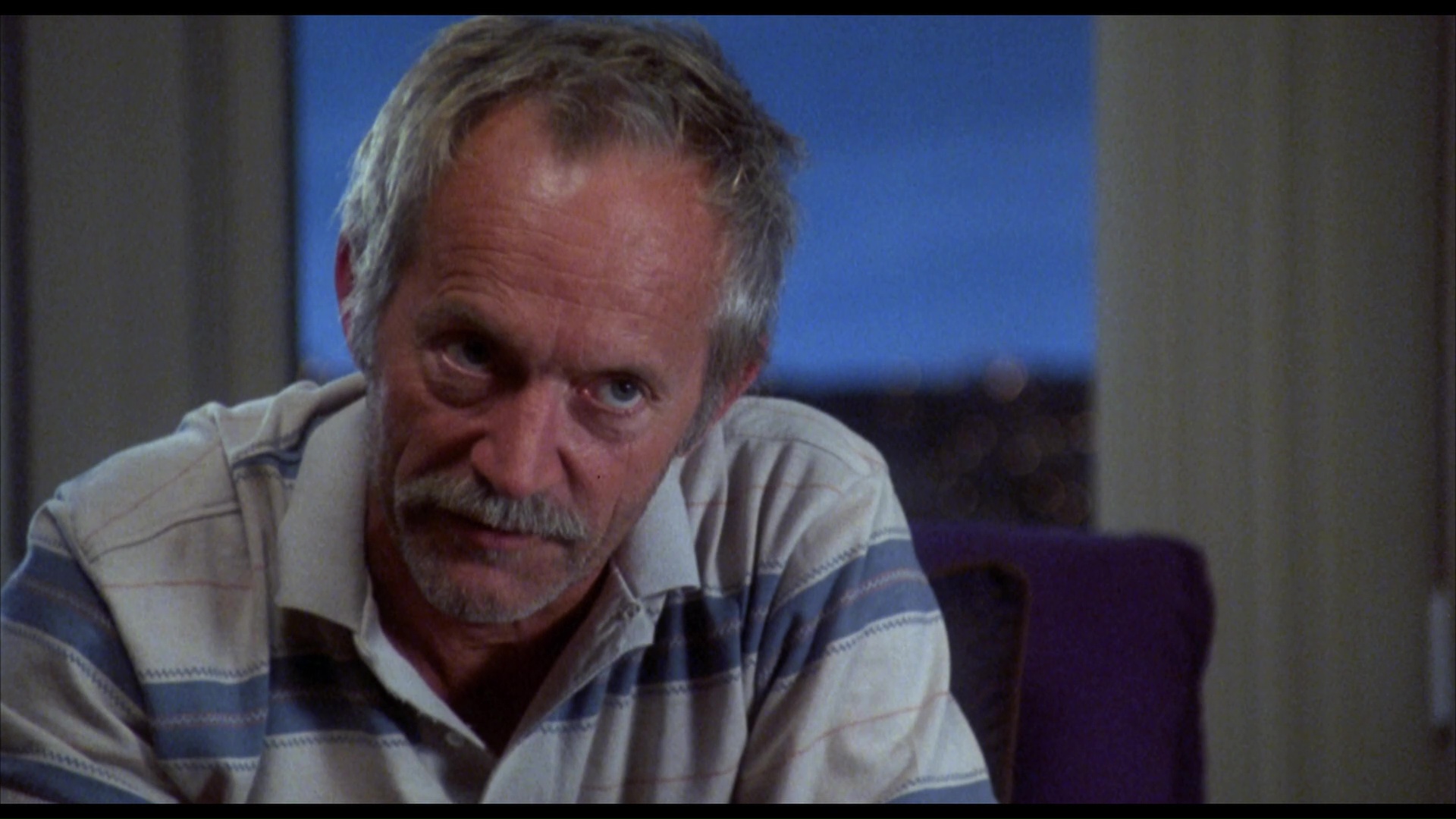 completely irrelevant in the theatrical cut. Not surprisingly, the sex scenes are also longer and steamier, particularly the swimming pool coupling with a couple of flashes of Willis's manhood; that scene also features different footage and music compared to the theatrical cut as well. The laserdisc and subsequent, lackluster non-anamoprhic DVD from Buena Vista in the U.S. are matted to 1.85:1 in keeping with the film's theatrical intentions, while the VHS presented the film open matte with some very substantial extra exposure of March (no stranger to nudity after her breakthrough role in The Lover) and Willis in numerous shots. Things got even more complicated when the film started turning up on video throughout Europe and the rest of the world in a confounding variety of presentations, but to keep things simple, the most significant ones are the DVD releases in France and the U.K. Both of these contain a different,unrated director's cut with even more explicit footage, including close-ups of the stars that would never fly in a Disney-sanctioned release in the U.S. (where the footage has never been released in any form). The U.K. DVD is also open matte and features the British trailer, which sells this entirely on the thriller and horror aspects with no eroticism at all. Basically if you want to see the most Mr. Skin-friendly edition of the film, that's the one to seek out; it's also the only one featuring dark blue color timing for the nocturnal climactic scene, which is otherwise naturally lit on other releases. The French DVD is anamorphic letterboxed at 1.85:1 and has a French trailer, filmographies and production notes. These versions, as well as the Italian and German releases, feature different editing choices elsewhere as well, most notably the scene with March playing footsie with Willis's crotch after fixing him dinner, as well as a post-coital bathtub scene. (Note that, apart from a wretched bootleg upconverted BD-R in Spain, the unrated version has never been released on Blu-ray.)
completely irrelevant in the theatrical cut. Not surprisingly, the sex scenes are also longer and steamier, particularly the swimming pool coupling with a couple of flashes of Willis's manhood; that scene also features different footage and music compared to the theatrical cut as well. The laserdisc and subsequent, lackluster non-anamoprhic DVD from Buena Vista in the U.S. are matted to 1.85:1 in keeping with the film's theatrical intentions, while the VHS presented the film open matte with some very substantial extra exposure of March (no stranger to nudity after her breakthrough role in The Lover) and Willis in numerous shots. Things got even more complicated when the film started turning up on video throughout Europe and the rest of the world in a confounding variety of presentations, but to keep things simple, the most significant ones are the DVD releases in France and the U.K. Both of these contain a different,unrated director's cut with even more explicit footage, including close-ups of the stars that would never fly in a Disney-sanctioned release in the U.S. (where the footage has never been released in any form). The U.K. DVD is also open matte and features the British trailer, which sells this entirely on the thriller and horror aspects with no eroticism at all. Basically if you want to see the most Mr. Skin-friendly edition of the film, that's the one to seek out; it's also the only one featuring dark blue color timing for the nocturnal climactic scene, which is otherwise naturally lit on other releases. The French DVD is anamorphic letterboxed at 1.85:1 and has a French trailer, filmographies and production notes. These versions, as well as the Italian and German releases, feature different editing choices elsewhere as well, most notably the scene with March playing footsie with Willis's crotch after fixing him dinner, as well as a post-coital bathtub scene. (Note that, apart from a wretched bootleg upconverted BD-R in Spain, the unrated version has never been released on Blu-ray.) 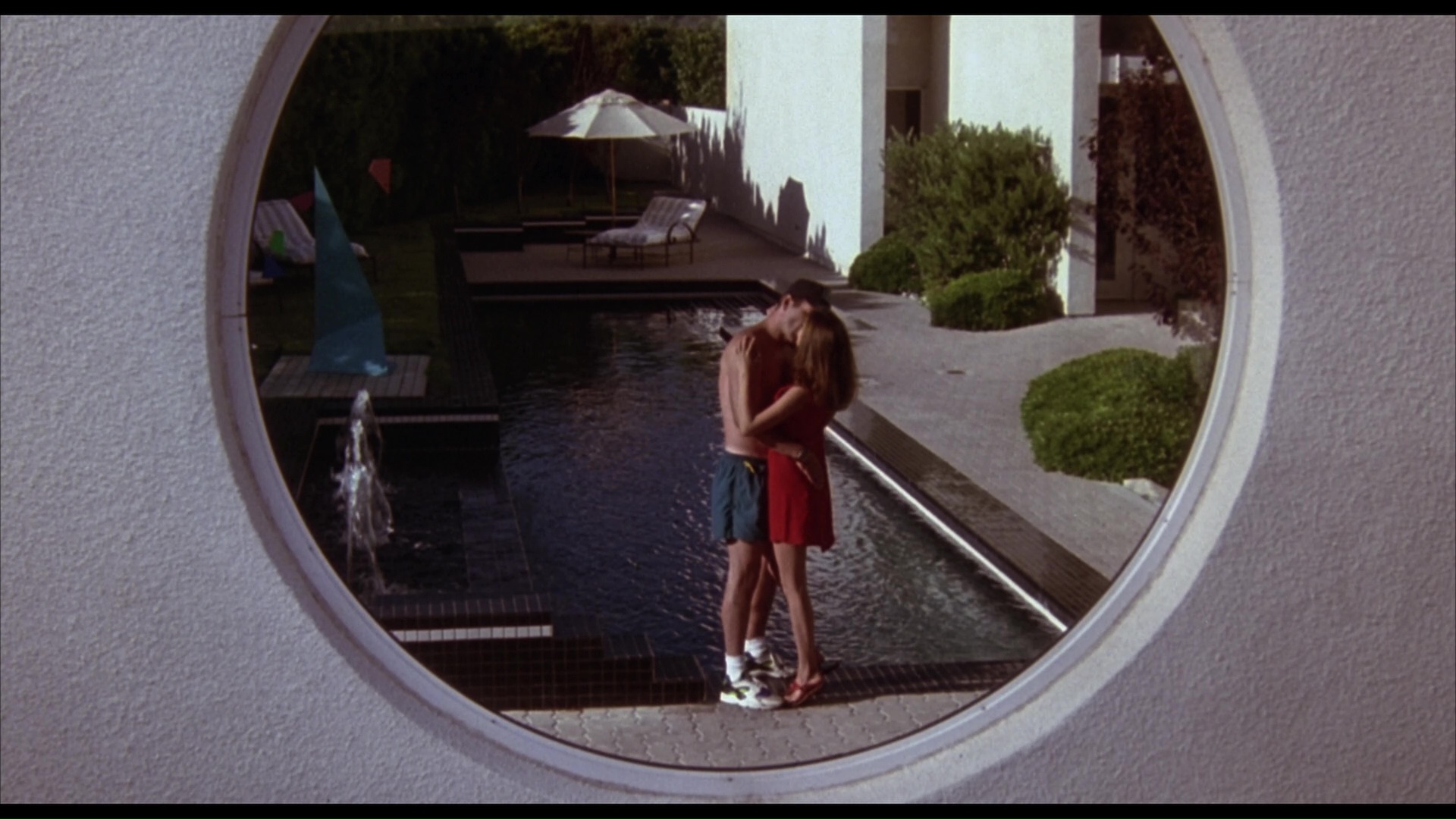 with Playing God. That transfer looked fine and fairly accurate to the hazy, stylized, and very '90s theatrical presentation, though jamming
with Playing God. That transfer looked fine and fairly accurate to the hazy, stylized, and very '90s theatrical presentation, though jamming 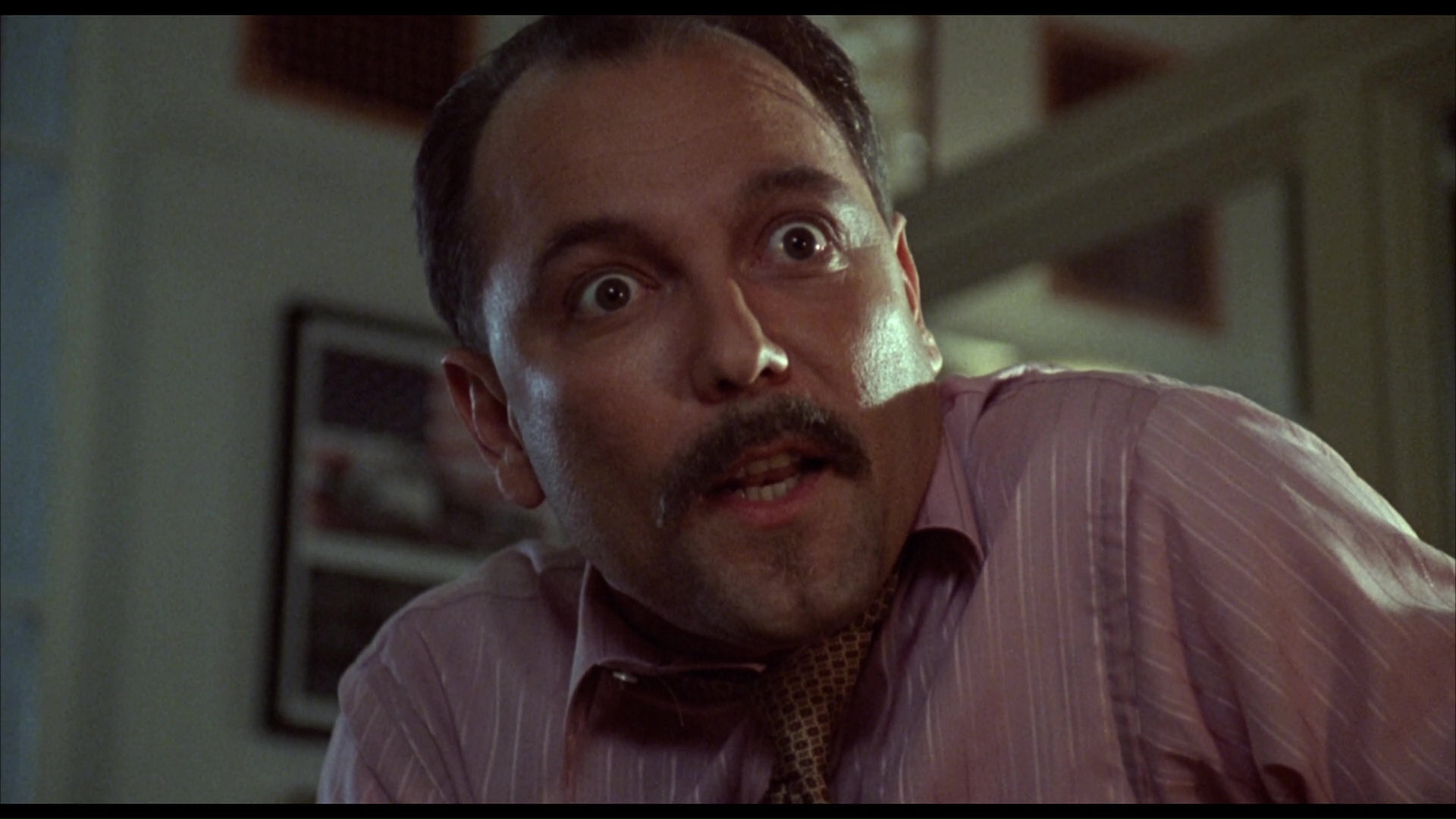 the lengthy feature onto one disc with another film doesn't result in the prettiest compression job. A couple of years later, the film started turning up on HD cable channels and iTunes -- and surprisingly it was the R-rated theatrical version, which to that point had never been released on home video at all. It's worth noting that, while the director's cut is obviously the more satisfying edition, the theatrical cut of this film has its benefits as well, namely a breakneck pace that pares away a lot of the therapy characterization and functions more as a lean, mean thriller, albeit far less of a Richard Rush film.
the lengthy feature onto one disc with another film doesn't result in the prettiest compression job. A couple of years later, the film started turning up on HD cable channels and iTunes -- and surprisingly it was the R-rated theatrical version, which to that point had never been released on home video at all. It's worth noting that, while the director's cut is obviously the more satisfying edition, the theatrical cut of this film has its benefits as well, namely a breakneck pace that pares away a lot of the therapy characterization and functions more as a lean, mean thriller, albeit far less of a Richard Rush film.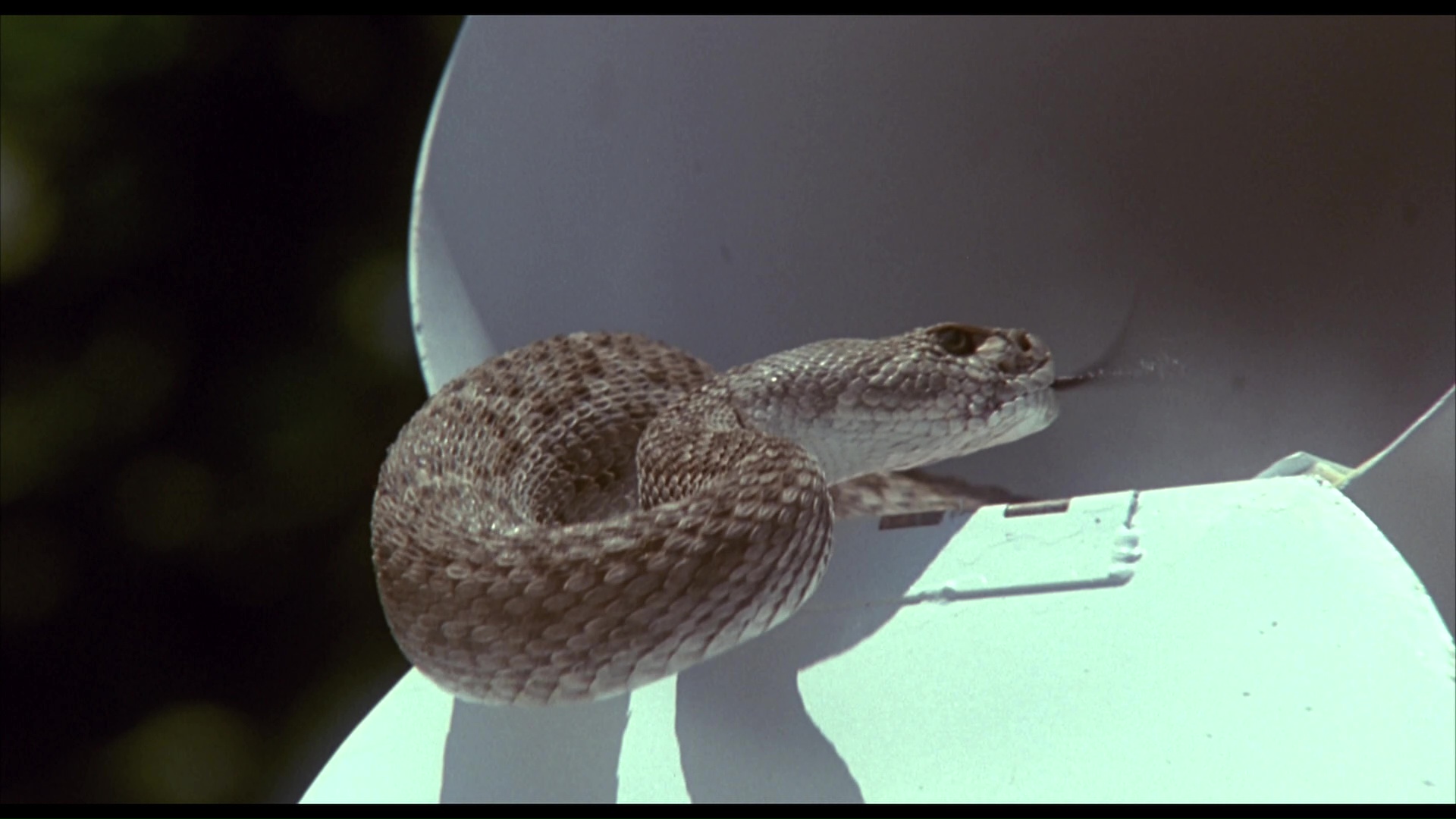 fizzled out after this, not for the reasons you might expect.
fizzled out after this, not for the reasons you might expect. 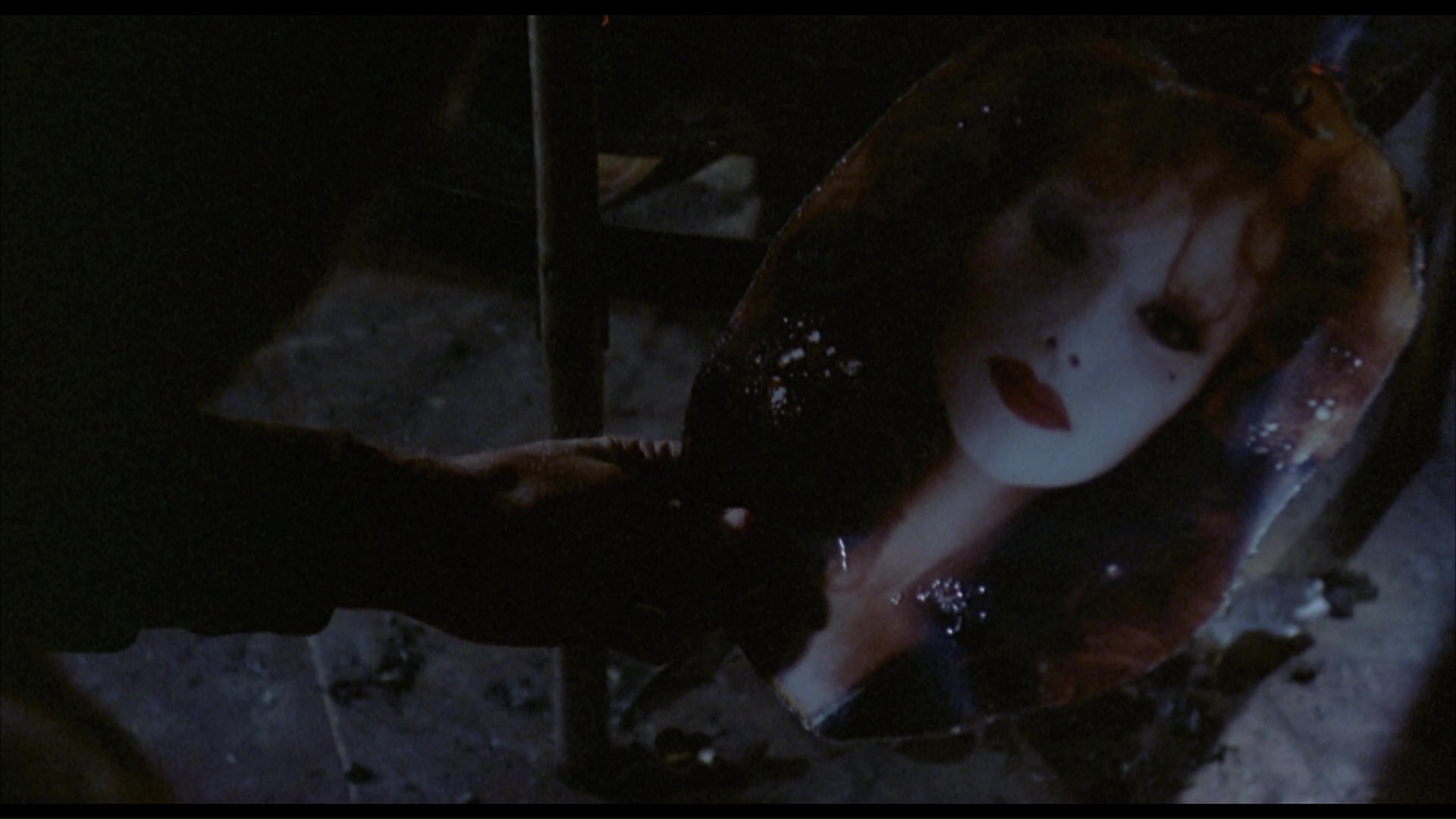 appears to be culled from the same scan used for the Mill Creek with the same framing, though it's a notch darker and benefits from being on its own disc (single-layered, but at least very little else in on there). Overall it's a pretty close approximation of how this looked in theaters. Audio options (both cuts) include DTS-HD 5.1 and 2.0 English mixes with optional English subtitles; the theatrical cut sounds fine and approximates how this played in theaters, though inexplicably, the director's cut is actually flat mono on both tracks. The theatrical cut on disc two appears to be from the same HD scan used for broadcast, looking quite a bit brighter and more sharpened with a little extra info on the edges as well. The colors are also dialed up and pushed into hotter territory, especially March's red dress. (See below for an example; frame grabs in the body of this review are from the director's cut on the Kino Lorber release). Note that the 2.35:1 aspect ratio on the packaging is a misprint, as the film is correctly presented at 1.85:1 for both cuts. In addition to an animated image gallery, the theatrical cut features a new audio commentary with screenwriter Matthew Chapman, who had just written Consenting Adults and, the previous decade, written and directed the fascinating surreal horror film, Heart of Midnight. Moderated by Heather Buckley, the conversation starts off talking about the script's origins as an early script by Billy Ray (who went on to The Hunger Games and Captain Phillips) that had to be goosed up to a higher budget production, with a much bigger budget than he expected. The commentary isn't scene specific (and strangely, neither of them seems to know which version they're watching) but instead goes through his tenure on this film, including a tale about Vajna gambling in Vegas, before spending the bulk of the time on his background (including a familial link to Charles Darwin), his work process, and his literary and cinematic interests. He also offers a frank assessment of this film and its creative team, just as open and sometimes astonishing as the Rush track; don't miss the anecdote about the animal kingdom poster.
appears to be culled from the same scan used for the Mill Creek with the same framing, though it's a notch darker and benefits from being on its own disc (single-layered, but at least very little else in on there). Overall it's a pretty close approximation of how this looked in theaters. Audio options (both cuts) include DTS-HD 5.1 and 2.0 English mixes with optional English subtitles; the theatrical cut sounds fine and approximates how this played in theaters, though inexplicably, the director's cut is actually flat mono on both tracks. The theatrical cut on disc two appears to be from the same HD scan used for broadcast, looking quite a bit brighter and more sharpened with a little extra info on the edges as well. The colors are also dialed up and pushed into hotter territory, especially March's red dress. (See below for an example; frame grabs in the body of this review are from the director's cut on the Kino Lorber release). Note that the 2.35:1 aspect ratio on the packaging is a misprint, as the film is correctly presented at 1.85:1 for both cuts. In addition to an animated image gallery, the theatrical cut features a new audio commentary with screenwriter Matthew Chapman, who had just written Consenting Adults and, the previous decade, written and directed the fascinating surreal horror film, Heart of Midnight. Moderated by Heather Buckley, the conversation starts off talking about the script's origins as an early script by Billy Ray (who went on to The Hunger Games and Captain Phillips) that had to be goosed up to a higher budget production, with a much bigger budget than he expected. The commentary isn't scene specific (and strangely, neither of them seems to know which version they're watching) but instead goes through his tenure on this film, including a tale about Vajna gambling in Vegas, before spending the bulk of the time on his background (including a familial link to Charles Darwin), his work process, and his literary and cinematic interests. He also offers a frank assessment of this film and its creative team, just as open and sometimes astonishing as the Rush track; don't miss the anecdote about the animal kingdom poster.